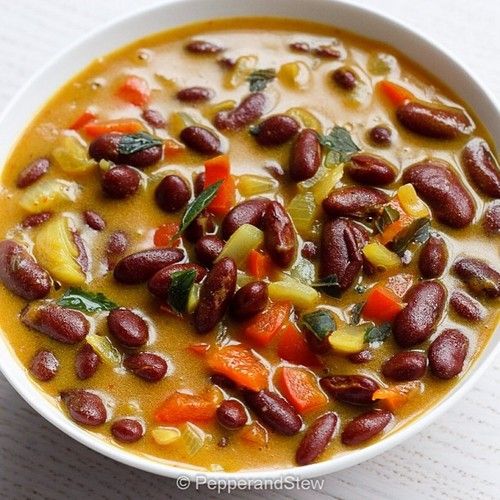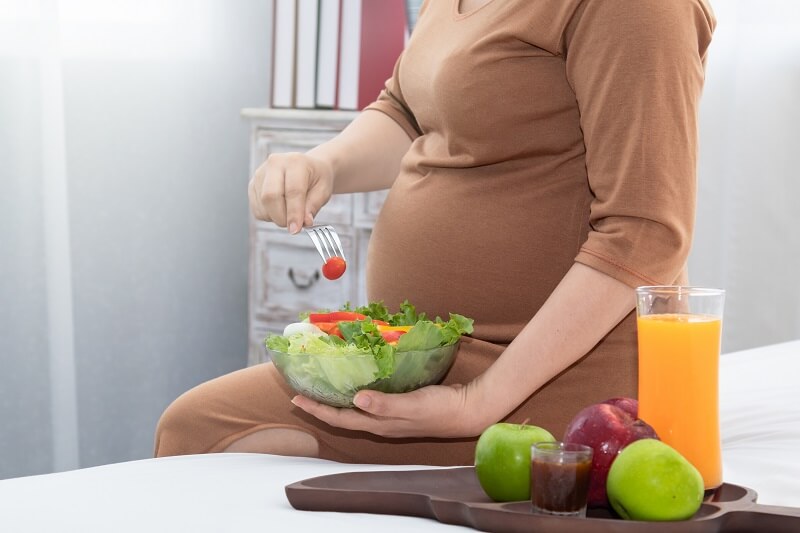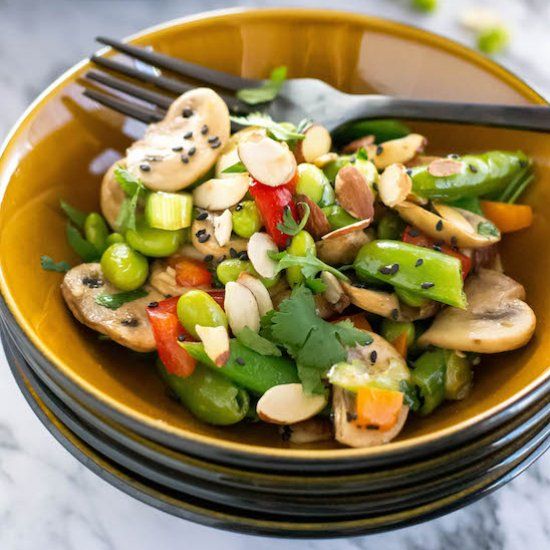Best beginner baby food
Jars, Pouches, Organic, and More
Share on PinterestWe include products we think are useful for our readers. If you buy through links on this page, we may earn a small commission. Here’s our process.
After months of breastfeeding or bottle-feeding, it can be surprising to realize that your still-tiny baby is actually ready for “real” food. This exciting (albeit messy!) transition may be a little bittersweet and can feel overwhelming, especially considering the numerous baby food options available in 2022.
We’ve rounded up some of this year’s best baby foods to help you get started on the right foot — er, spoon.
Both the World Health Organization and the American Academy of Pediatrics (AAP) recommend exclusively breastfeeding babies for the first 6 months of life. Formula-fed infants are ready to start solid foods when they start showing signs that they’re ready.
In some cases, you may start solids around 4 or 5 months, but it’s best to discuss this with your pediatrician. If your doctor doesn’t have a different recommendation, most babies are ready to start soft or pureed foods by the time they’re about 6 months old.
If you’re picking commercially prepared baby food (versus making your own), it’s wise to start with simple, one-ingredient baby food. Most commercial baby food is labeled stage 1, 2, or 3 based on the texture and number of ingredients.
For instance, stage 1 baby food has the smoothest texture and typically has one ingredient, such as pureed pears. So, for your 4- to 6-month-old, you’ll want to start with stage 1 baby food.
Starting with one food at a time helps you monitor for any adverse reactions or food allergies. The American Academy of Allergy, Asthma & Immunology recommends monitoring each food for 3 to 5 days.
There isn’t really a perfect first food — the choice is yours! Some good foods to start: infant cereal (preferably oat or whole grain), meat purees such as chicken or turkey, or single-ingredient purees of fruits or veggies.
If you’re debating whether to start with fruits or veggies first, the AAP suggests that an infant’s preferences for sweets won’t budge even if veggies are introduced first. Mashed peas just don’t taste as good once you’ve had applesauce.
We chatted with pediatricians, read the research, polled real-life parents, read reviews, and used our own babies as taste testers (although we can’t say their opinions on nutritional value are very authoritative) to bring you some of the top baby food brands available. In addition:
- We looked for foods that are certified USDA organic and have non-GMO verified ingredients.
- We focused on baby food that’s free of added sugar (but have called out one or two products that contain it).
- The baby foods on our list are free of harmful preservatives.
- We called out the brands that market their products as gluten-free and allergen-free.
All products are also vetted by our medical standards team, which evaluates brand integrity and product safety.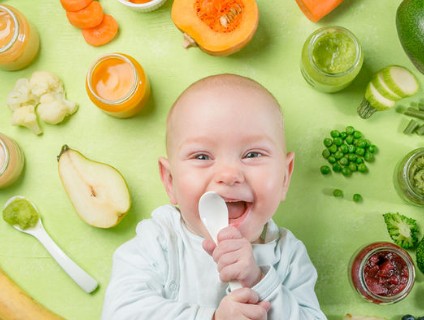
Reducing Exposure to Toxic Elements in Baby Foods
Three brands in this article — Gerber, Beech-Nut, and Happy Baby — were mentioned in a February 2021 Congressional Report for products containing significantly high levels of toxic heavy metals, including arsenic, lead, cadmium, and mercury. The FDA has since launched the Closer to Zero: Action Plan for Baby Foods to address exposure to toxic elements from eating baby foods.
- Best overall baby food: Beech-Nut Naturals Stage 1
- Best organic baby food pouches: Plum Organics Stage 1
- Best budget-friendly baby food: Gerber Organic 1st Foods
- Best baby food for constipation: Gerber Natural 1st Foods (Pear)
- Best organic jarred baby food: Happy Baby Organics Clearly Crafted Stage 1
- Best personalized subscription service: Cerebelly
- Best fresh baby food: Once Upon a Farm Cold-Pressed Organic Baby Food
- Best first baby cereal: Gerber Organic 1st Foods Single Grain Cereal
- Best, most interesting baby food blends: Little Spoon Complex Solids
- Best all-around clean baby food: Baby Gourmet
Best overall baby food
Beech-Nut Naturals Stage 1
This affordable baby food is an all-around fan favorite. Beech-Nut baby foods come in recyclable glass jars and are available in both natural and organic varieties. Blends are available in every stage, from single-ingredient foods for brand-new eaters (like butternut squash and plum) to multi-food blends with chunkier textures for older babies.
Beech-Nut baby foods come in recyclable glass jars and are available in both natural and organic varieties. Blends are available in every stage, from single-ingredient foods for brand-new eaters (like butternut squash and plum) to multi-food blends with chunkier textures for older babies.
The ingredients in Beech-Nut baby foods are simple, with no artificial additives. Plus, these little glass jars are available at most grocery stores, so they’re easy to find. However, while it’s great for recycling purposes, glass can be dangerous — always supervise your little one around glass.
Beech-Nut Naturals are free of genetically modified organisms (GMOs) but not certified organic (unless you shop their organics line). They contain no added sugar.
Shop now at Walmart
Best organic baby food pouches
Plum Organics Stage 1
If sustainability, organic foods, and non-GMO ingredients are important to you, Plum Organics has a great line of baby food options to try.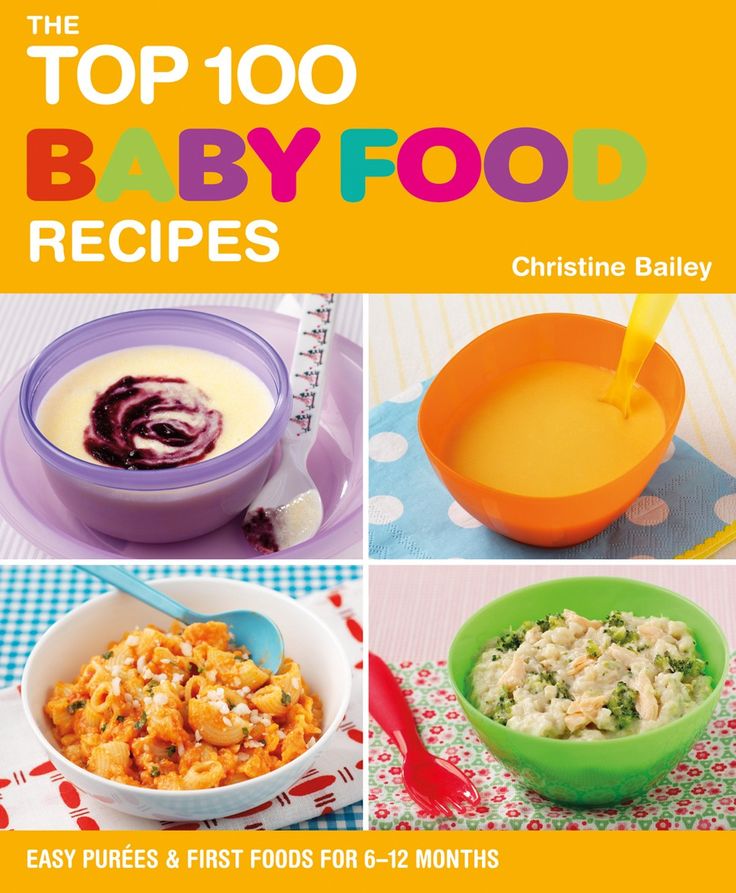
Their BPA-free pouches are super convenient and available in a variety of fruits, veggies, and grains for each stage of eating. These foods have no added salts or sugars, so they’re nutritious and simple for baby’s maturing digestive system. They’re also widely available and can be purchased in bulk for greater savings.
And while feeding experts definitely discourage using pouches exclusively, there’s no denying that pouches are very convenient for occasional on-the-go feedings. To make sure your baby is still progressing in their journey through solid foods, try squeezing the pouch contents into a spoon. And be sure to watch out for the small plastic caps, as they’re a choking hazard.
Plum Organics is certified organic and non-GMO, and their baby food doesn’t contain added sugar.
Shop now at Amazon
Best budget-friendly baby food
Gerber Organic 1st Foods
Gerber is the classic baby food brand, and they’ve made changes over the last few years to make their food more health-conscious (e.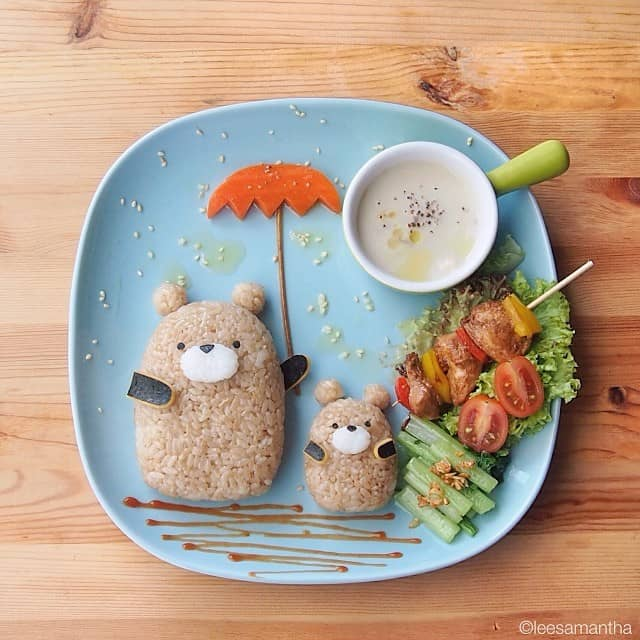 g., starting an organic line). Yet they have maintained their status as one of the most affordable prepared baby food brands on the market.
g., starting an organic line). Yet they have maintained their status as one of the most affordable prepared baby food brands on the market.
They offer benefits like glass jars, organic ingredients, and a wide variety of food choices at a lower cost than some other brands on our list.
Gerber Organic is USDA organic, non-GMO, and free of added sugar.
Shop now at Walmart
Best baby food for constipation
Gerber Natural 1st Foods (Pear)
Sometimes babies get a little constipated when they’re beginning their solid food journey, especially if they’re eating a lot of dairy or iron-fortified cereal. In addition to continuing breast milk, some foods may help relieve your little one’s digestive discomfort, including all the “P” fruits.
So prunes, pears, plums, and peaches are some options to help keep tiny bowels on the move. You can find great fruit purees in any brand on our list, but one of the more cost-effective is the Gerber brand. The good news is that many babies love fruit, so it shouldn’t be too hard to get your little one to down some prunes or pears.
This product is made with non-GMO ingredients and pears grown with Clean Field Farming practices. It doesn’t contain added sugars.
Shop now at Walmart
Best organic jarred baby food
Happy Baby Organics Clearly Crafted Stage 1
Another great organic baby food option, the Happy Baby company offers their organic baby food jars at most stores — although not quite as widely as Beech-Nut and Plum Organics.
Happy Baby jars offer a wide variety of foods, from kale and mango to spinach and peaches and chia seeds. You can start with their single-ingredient jars (this is important for ruling out allergies, as well as to help baby learn to like spinach even when it’s not disguised by pears). Then, you can move on to their fruit and veggie blends as your little one grows.
High quality ingredients, creative flavors, and no artificial ingredients all make Happy Baby a solid (no pun intended) choice.
Happy Baby is USDA organic and doesn’t contain added sugars.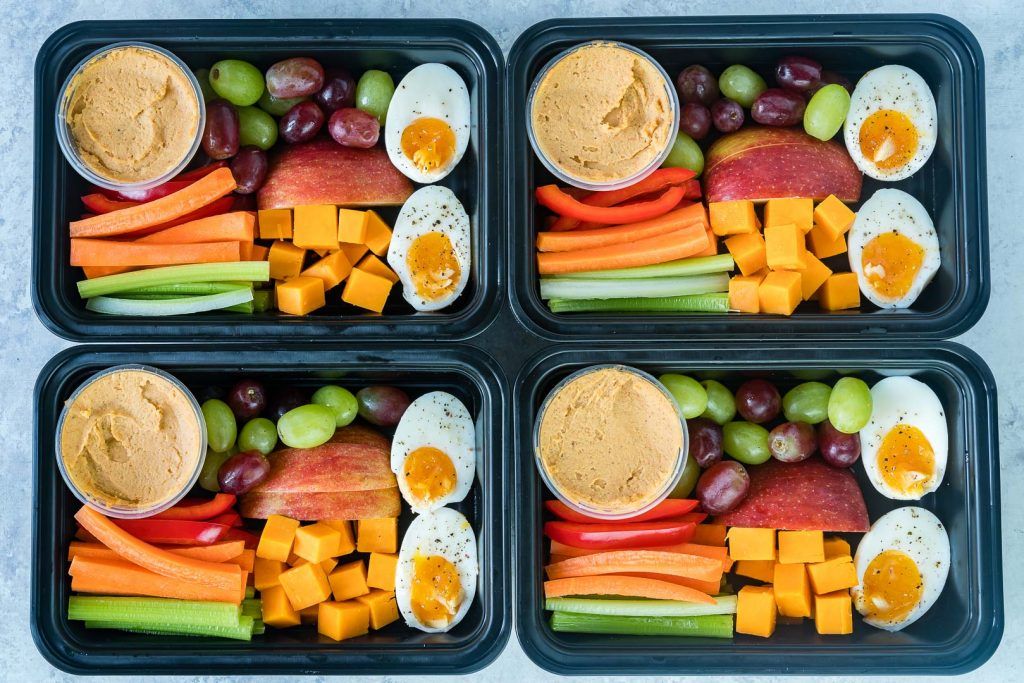
Shop now at Walmart
Best personalized subscription service
Cerebelly
Cerebelly allows you to personalize your subscription of baby food pouches based on your child’s age, leaning on science to determine what foods will benefit them at their stage of development.
You’ll take a quiz that asks about the current development and language cues your baby is showing (responding to their name, grasping toys, using noises to show emotion, etc.). It also asks about motor, social, and visual skills.
The results will clue you in on key nutrients that may benefit your little one and customize your baby food pouches based on this.
To boot, the brand has earned the Clean Label Project Purity Award (which evaluates products for toxins and contaminants), is certified USDA organic, and contains no added sugars.
Shop now at Cerebelly
Best fresh baby food
Once Upon a Farm Cold-Pressed Organic Baby Food
These organic, cold-pressed baby food pouches and cups are found in the refrigerated section at your grocery store (and yes, they have to be refrigerated at home). The company also has a subscription delivery option to make baby food even more convenient for your busy schedule.
The company also has a subscription delivery option to make baby food even more convenient for your busy schedule.
Creative names like Wild Rumpus Avocado and Magic Velvet Mango will have you smiling, and the variety of flavors will (hopefully!) appeal to your little one. Once Upon a Farm offers a variety of food stages, so you can start with their purees and move on up to their finger and toddler foods as your baby grows.
Once Upon a Farm is certified organic and non-GMO. Their products contain no added sugars and are Clean Label Project certified.
Shop now at Target
Best first baby cereal
Gerber Organic 1st Foods Single Grain Cereal
This simple cereal is a great first food for baby. You can mix this one-ingredient whole grain cereal with breast milk, formula, or water to provide your little one with some crucial nutrients (such as iron) and experience with spoons and textures.
The AAP recommends oatmeal or multigrain cereals over rice cereals, as they have a lower risk of exposure to chemicals such as arsenic (which is sometimes a concern with rice products).
As your baby gets used to other foods, you can also mix this cereal with fruit or yogurt to provide a heartier meal.
Gerber Organic is certified USDA organic and non-GMO, but this product does contain some added sugars.
Shop now at Walmart
Best, most interesting baby food blends
Little Spoon Complex Solids
Once your baby is ready for more advanced blends, Little Spoon has a unique line of complex blends that contain multiple purees as well as other seeds and grains for texture.
For example, one blend contains quinoa, butternut squash, and apple. Another contains kale, white bean, pear, basil, quinoa, and avocado oil.
Little Spoon purees use certified organic and non-GMO ingredients. They’re free of added sugar.
Shop now at Little Spoon
Best all-around clean baby food
Baby Gourmet
Baby Gourmet is another Clean Label Project Purity Award winner, which means they go above and beyond to ensure their baby food is free of harmful toxins that naturally occur in the environment.
This Canadian company is also set to donate 1 million meals to vulnerable populations by 2025. It’s founded and run by moms, which can be reassuring.
Baby Gourmet is certified organic and non-GMO by both U.S. and Canadian standards. All packaging is BPA-free. Products contain no added sugar.
Shop now at Baby Gourmet
As a general guideline, it’s a good idea to start with iron-fortified baby cereals or pureed meats if your infant is breastfed. Breastfed babies are more likely to need extra iron than formula-fed babies.
It’s also advisable to start with simple, single-ingredient purees of meat, vegetables, and fruits.
Choosing brands that are certified organic, use BPA-free materials, and are conscious of using whole food ingredients (e.g., they don’t add “extras” like salt, sugar, or corn syrup) helps ensure a healthy start for your little one.
According to the AAP, you shouldn’t give babies under age 1 cow’s milk, honey, unpasteurized dairy, or undercooked meat, as these can be an infection risk for a baby’s developing immune system.
You’ll also want to avoid foods that are hard or sharp or present a choking risk (for instance, chips, nuts, popcorn, raisins, raw apples, raw carrots, whole grapes, hot dogs). For a more comprehensive guide to which foods to give and what to avoid, check out our article on infant nutrition and starting solids.
While experts used to advise waiting to introduce highly allergenic foods (such as dairy, wheat, nuts, and eggs) until after the first year, the experts now say that delayed introduction of these foods may increase a child’s risk of food allergies. So, with the guidance of your pediatrician, go ahead and introduce those foods within the first year.
Seek immediate emergency medical attention if you notice swelling of the tongue and mouth, wheezing, or trouble breathing after your child eats certain foods
Some babies are raring to go when it comes to trying food, while others may take a little more convincing. Either way, definitely get your camera on video mode, as there are bound to be some hilarious faces and some impressive food spillage along the way.
Here are some pro tips to help make the process as smooth as possible:
- Wait until your baby shows signs of readiness for solid food.
- Keep trying. It can take 5 to 10 exposures for a baby to accept a new food.
- Make it fun and silly.
- Cook and eat as a family as much as possible.
- Let your baby play with the spoon and even the food! While incredibly messy, this helps them get comfortable with the textures, smells, and tastes of new foods.
- Talk with your pediatrician if you have any questions or concerns. They’re a great resource and want to help you grow a happy, healthy baby.
What’s the best baby food for growth and weight gain?
If your baby is under 6 months and breastfeeding, it’s recommended that you stick to that exclusively for 6 months. When you’re ready to introduce solids after 6 months, it should be in addition to breastfeeding and formula, not as a replacement.
If your baby is formula-fed, they may begin eating solids sooner than 6 months. While no one specific food is recommended, a variety of foods and colors is best, including meats, vegetables, and fruits. One of the key foods that can help with growth and weight gain is avocados (high in healthy fats and fiber but low in sugar).
While no one specific food is recommended, a variety of foods and colors is best, including meats, vegetables, and fruits. One of the key foods that can help with growth and weight gain is avocados (high in healthy fats and fiber but low in sugar).
Always discuss your baby’s dietary changes with your pediatrician and attend regular checkups to monitor growth.
What’s the easiest food for babies to digest?
Just like adults, babies do best with regular bowel movements. If they’re having a hard time with this, oatmeal is one food known to be easy to digest and promote regularity, as it contains higher amounts of dietary fiber.
It may also help to focus on quantity. Try feeding your baby smaller meals more often, rather than fewer larger meals. This may be easier on their system and allow them to digest foods more easily.
What’s the best baby food to start with?
Mashed banana and avocado are some of the most popular solids to start with. Soft, ground oatmeal is also great. When it comes to fruit and vegetable purees, focus on variety, but don’t overdo it with those that are naturally high in sugar (such as berry purees).
When it comes to fruit and vegetable purees, focus on variety, but don’t overdo it with those that are naturally high in sugar (such as berry purees).
Most importantly, at 6 months old, all foods should still be pureed and cooked. Once your baby is 9 months old and older, you can start to introduce vegetables cut into pieces. The only other no-no is honey, which they shouldn’t have until they’re over a year old.
It can feel like a lot of pressure to choose the best nutrition for your child, especially when trying to capitalize on the years before they start demanding chicken nuggets and ice cream. But there are a lot of great, healthy options available in 2022.
Whether you choose to make your own baby food, buy jars or pouches, or use a baby food subscription service, there are a number of resources to help you feed your baby.
10 Best First Foods for Baby (purees or baby-led weaning)
These 10 Best First Foods for Baby are perfect either as a baby food puree or as finger foods for baby-led weaning. Full of essential nutrients for a growing baby, these irresistibly delicious recipes are great for babies 6+ months of age. What’s more, this guide also contains 6 tips for getting started and more than 30 easy-to-follow recipes!
Full of essential nutrients for a growing baby, these irresistibly delicious recipes are great for babies 6+ months of age. What’s more, this guide also contains 6 tips for getting started and more than 30 easy-to-follow recipes!
Medically reviewed by Jamie Johnson, Registered Dietitian Nutritionist (RDN), and Lauren Braaten, Pediatric Occupational Therapist (OT).
Best First Foods for Baby
Looking to serve your baby the best foods right from their very first bite?
Then this guide is for you! Filled with 10 of my all-time favorite foods for baby, all in one place!
These 10 wholesome foods are packed with vital nutrients for a growing baby, are full of flavor, and are hassle-free to make into a simple baby food puree or finger food for baby-led weaning. Plus, the ingredients are relatively easy to find in any grocery store.
10 of the Best First Foods for Baby- Apple
- Broccoli
- Salmon
- Egg
- Sweet Potato
- Yogurt
- Avocado
- Banana
- Squash
- Green Beans
Let’s take a closer look into each of these mouthwatering foods, shall we?
First time making homemade baby food? Then, I would suggest that you start by reading my very in-depth Guide on how to Make Homemade Baby Food – which goes over all the important information such as the best cooking tools to have on hand, safe storage, how to know when baby is ready for solids, how to introduce purees, the best first foods for baby, and more! If you are doing Baby-Led Weaning, then be sure to check out my Complete Guide to Baby-Led Weaning – which covers what exactly is baby-led weaning, to every parent’s concern of baby-led weaning and choking, this guide goes over it all.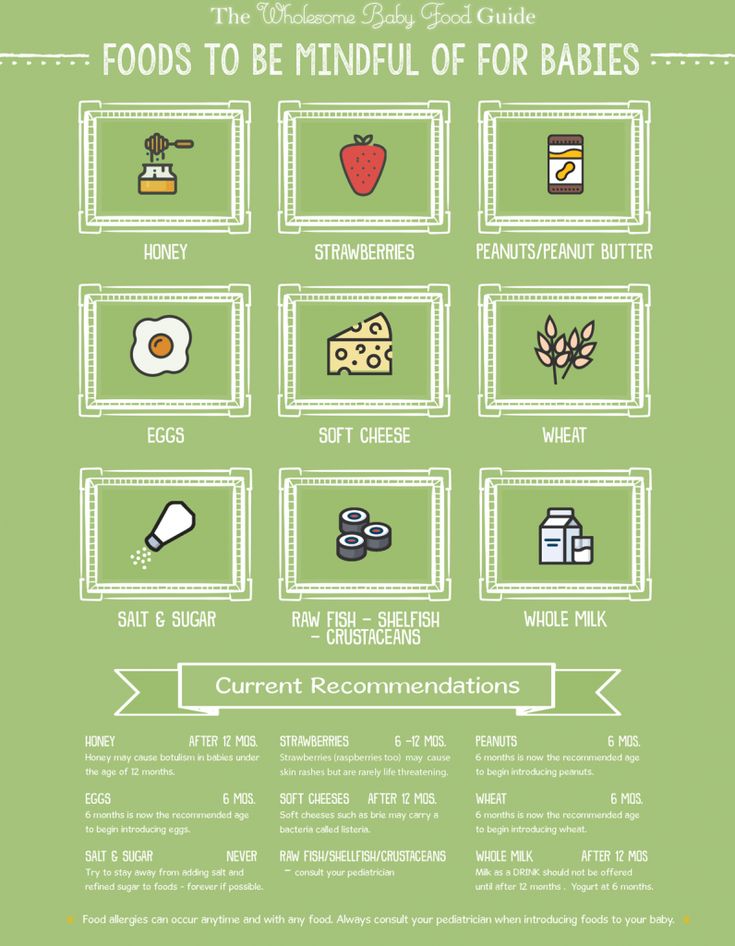 I will also share how to know when baby is ready for BLW, the top 10 best first foods, a helpful sample blw feeding schedule, helpful tools to have on hand, and much much more! You can also check out my best-selling cookbook for even more information and recipes!
I will also share how to know when baby is ready for BLW, the top 10 best first foods, a helpful sample blw feeding schedule, helpful tools to have on hand, and much much more! You can also check out my best-selling cookbook for even more information and recipes!
Best Foods for Baby Video
Watch this video to see how easy these 10 foods are to make for your baby.
When Is Your Baby Ready For Their First Bite?
Whether you decide to go with traditional weaning (purees), baby-led weaning or a combination of both, look for these readiness signs in your baby:
- Around 6 months of age
- Sitting with minimal assistance
- Good control of their head and trunk
- Bringing hands and toys to their mouth
- Appears interested in food, possibly by reaching for or leaning forward towards food
Before you start weaning your baby, you should consult with your pediatrician to make sure your child is developmentally ready.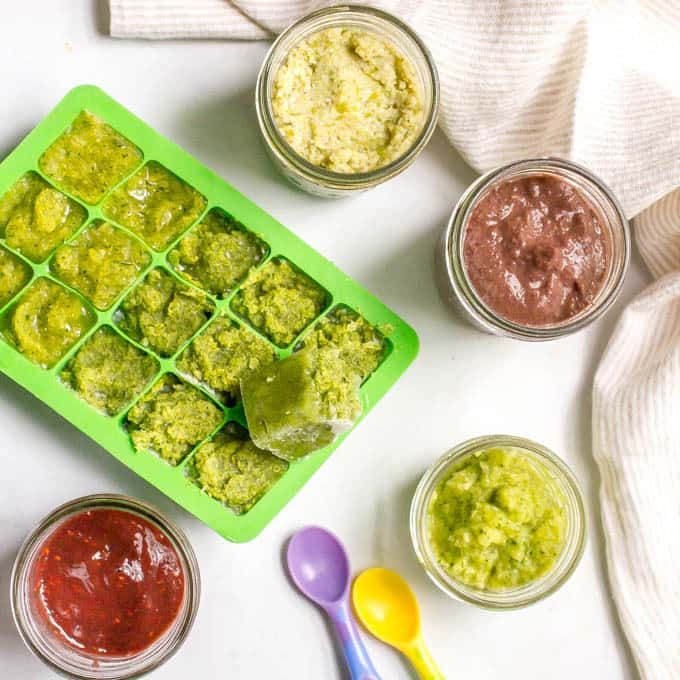
Tips for Getting Started
- Start Slowly – Start by serving a small amount of one food item to your baby once or twice a day to see how they will react. If they are reaching for more, then, by all means, give them more. If they keep tossing it on the floor or refusing to open their mouths, then take that food away and try again in a couple of days. It takes some time before they are eating entire meals.
- Cut Up Finger Foods – To avoid choking hazards, make sure you are cutting finger foods for baby-led weaning into long, 2-3 inch strips or small, mashable, pea-sized pieces. Usually, babies starting baby-led wearing prefer using their palmar grasp (holding onto the long 3″ piece of food), but you can also cut the food both ways to see which one your baby prefers.
- Be Patient – It might take a while for your baby to get into their eating groove. They may also love the idea of eating but get more food on the floor than in their mouths.
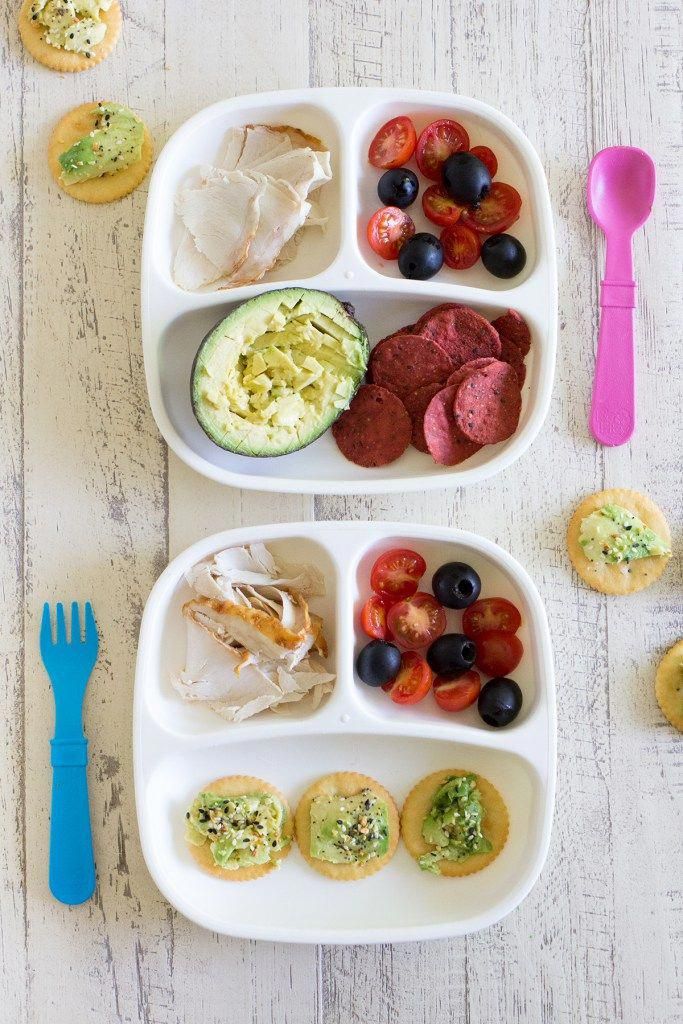 Babies might even seem interested in food but then turn their heads every time a spoon comes near their lips. It’s frustrating, I get it! But keep on serving healthy foods and be patient.
Babies might even seem interested in food but then turn their heads every time a spoon comes near their lips. It’s frustrating, I get it! But keep on serving healthy foods and be patient. - Eat as a Family – Whether you are doing purees or baby-led weaning, eating as a family promotes healthy food habits right from the start. By eating with your baby, you show them how to bring food from a plate to your mouth, chew, and swallow. And when babies see their mom or dad eating the same thing as they are, they are more likely to eat it!
- Mix It Up – Please do not take these 10 foods and serve them to baby all at once and for every meal. Sure, they are loaded with nutrients and flavor for a growing baby. But babies also need to be exposed to various fruits, veggies, grains, and meats. So mix things up and try to serve them different items each week.
- Add Seasoning – I definitely recommend serving food with spices, herbs, and added healthy fats (refined coconut oil, high-quality olive oil, or butter).
 Not only do healthy fats aid in brain development and keep babies full up for longer, but they also make food taste way better! Fats are also needed to help absorb the fat-soluble vitamins A, D, E, and K.
Not only do healthy fats aid in brain development and keep babies full up for longer, but they also make food taste way better! Fats are also needed to help absorb the fat-soluble vitamins A, D, E, and K.
Purees vs. Baby-Led Weaning
Regardless of what you read or hear, there is no right or wrong way to feed your baby.
Purees might work better for your family because you can prep a ton of purees in an afternoon and have a freezer stash of food ready for your baby to eat anytime they are hungry.
Perhaps Baby-Led Weaning might be a more flexible way to serve food to your baby right alongside everyone else.
Or maybe a combo of purees and baby-led weaning would work best.
Either way, it’s important to remember that this stage of feeding is all about exposure to new flavors and textures of foods.
So, you do you!
Again, there is NO right way to feed your baby! Play around and find out what works best for both your baby and family and go with it.
Kitchen Tools
Here are my favorite kitchen essentials to make the best homemade baby foods for your baby! These kitchen tools will help make the process of cooking, blending, and freezing baby food hassle-free. You can find a full list of my favorite baby food-making tools in my online Shop.
- Blender or Food Processor
- Freezer Storage Tray
- Fridge Storage Containers
- Stasher Bag
- Baking Sheet
- Steamer Basket
- Medium Saucepan
- Reusable Pouches
- easy to hold fork and spoon
- GOOtensils
- High Chair
- Suction Bowl and Spoon Set
- Bib with Food Catcher
Avocados are often called one of nature’s superfoods because they contain so many nutrients a person needs to survive and thrive.
Benefits of Avocado for Baby
They are packed with all the B vitamins (minus B12), vitamin C, a wide array of minerals and are high in brain-building omega-3 fatty acids.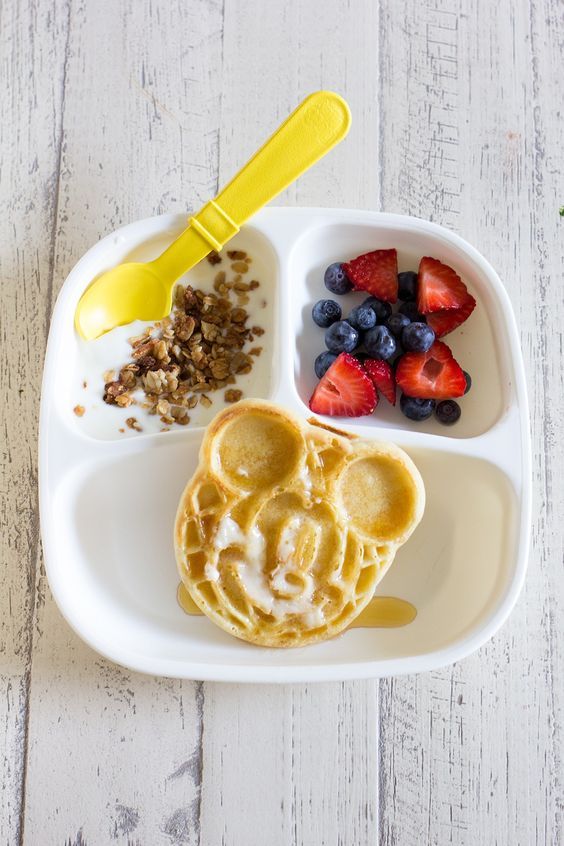 In fact, 88% of an avocado is made up of healthy fats, helping us absorb certain fat-soluble vitamins, control blood sugar, and support a healthy cardiovascular system. In other words, avocados are so nutritious; they are also ideal as the first food for your baby.
In fact, 88% of an avocado is made up of healthy fats, helping us absorb certain fat-soluble vitamins, control blood sugar, and support a healthy cardiovascular system. In other words, avocados are so nutritious; they are also ideal as the first food for your baby.
How to Make Avocado Baby Food Puree
Make sure to read the recipe card below for full ingredients and instructions!
- Peel and pit a quarter of a ripe avocado and place it on a cutting board.
- With the back of a fork, mash the avocado until smooth.
- If needed, you can add a teaspoon or two of formula or breast milk to make the puree extra smooth and creamy.
How to Serve Avocado for Baby-Led Weaning
Make sure to read the recipe card below for full ingredients and instructions!
- Cut a slice of avocado off of the pit.
- Using a small knife, cut into the peel 1/3 of the way up the slice of avocado until you get to the flesh.
- Peel off 2/3 of the peel and hand your baby the peel side of the avocado.
 This provides a nice handle for babies to hold while they eat the avocado.
This provides a nice handle for babies to hold while they eat the avocado.
Want more avocado recipes? Get 4 more ways to serve avocado to baby here!
EggEggs are another amazing first food for babies and can be served any time of the day.
Benefits of Eggs for Baby
Egg yolks are packed with choline, an important nutrient for your baby’s brain development, and the whites are excellent sources of protein. Pasture-raised eggs are a good course of brain-boosting Omega-3s.
How to Make Egg Baby Food PureeMake sure to read the recipe card below for full ingredients and instructions!
- Hard-boil an egg, then peel away the shell and white part.
- Place the cooked egg yolk on a cutting board or baby-safe plate.
- Using the back of a fork, mash the egg yolk until smooth, adding a teaspoon or two of breast milk or formula if needed to make it creamy.
Make sure to read the recipe card below for full ingredients and instructions!
- Peel a hard-boiled egg and cut it into quarters the long way.
 Scrambled eggs, plain omelets, or egg roll-ups also work great as finger food for babies.
Scrambled eggs, plain omelets, or egg roll-ups also work great as finger food for babies. - Place the egg quarters on baby’s highchair tray or in a bowl.
Sweet Potato
Sweet potatoes are also at the top of my list when it comes to the first foods to introduce to babies. The nutritional value of sweet potatoes is outstanding, and their naturally sweet taste makes them easy to introduce to your baby.
Benefits of Sweet Potato for Baby
Sweet potatoes are also high in beta-carotene and vitamin C and the ultra-important electrolyte mineral, potassium! Sweet potatoes also contain good levels of vitamin E, calcium, and folate. Due to their high fiber content, sweet potatoes helps support a healthy digestive tract and promote regular bowel movements for your baby.
How to Make Sweet Potato Baby Food Puree
Make sure to read the recipe card below for full ingredients and instructions!
- Peel and chop 1-2 sweet potatoes.
- Place them in a steamer basket over boiling water and steam for 10-12 minutes or until tender when pricked with a fork.
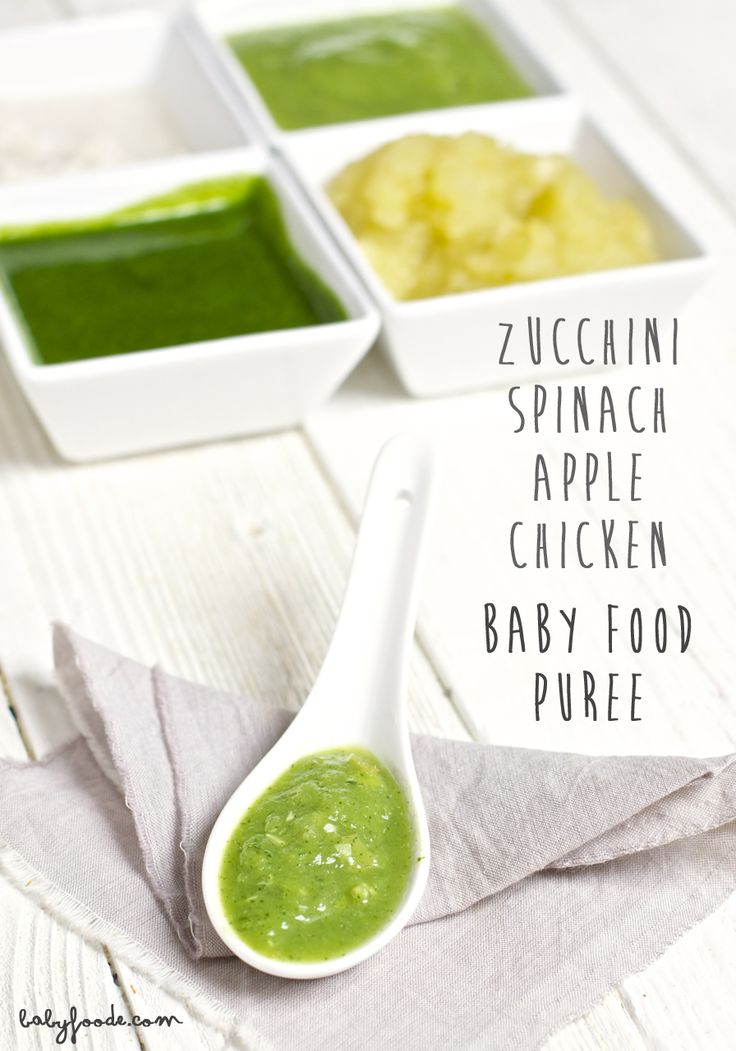
- Add cooked sweet potatoes to a food processor or blender, and puree for 1-2 minutes until completely smooth, adding water, fresh breast milk or formula, in 1/4 cup increments if needed. I had to use 1 cup of water for the puree above.
- For more sweet potato recipes your baby can enjoy, visit these posts: Sweet Potato + Curry Baby Food Puree, Sweet Potato + Thyme Baby Food Puree, and Sweet Potato with Coconut Milk Baby Puree.
How to Serve Sweet Potatoes for Baby-Led Weaning
Make sure to read the recipe card below for full ingredients and instructions!
- Peel and slice the sweet potato into long strips that are half an inch thick.
- Place wedges a steamer basket and steam for 8-10 minutes or until tender when pricked with a fork. Remember, you want them soft but not overcooked. Overcooked sweet potatoes tend to fall apart when babies fist them.
- Let them cool and serve to baby. This recipe will last 5 days in the fridge.
Want more sweet potato recipes? Then head over to Sweet Potato for Baby – 6 Delicious Ways
Apples
Apples are a yummy, nutrient-dense first food for babies too. They’re easy to digest, high in immune-boosting nutrients, and perfectly sweet on their own.
They’re easy to digest, high in immune-boosting nutrients, and perfectly sweet on their own.
Benefits of Apples for Baby
We’ve all heard the saying “An apple a day…” well, there may be some truth to this — apples are high in polyphenols and phytonutrients, which are potent antioxidants that help protect babies and kiddos from disease and illness. In addition to antioxidants, apples contain insoluble and soluble fiber, helping protect babies from diarrhea and constipation.
How to Make Apple Baby Food Puree
Make sure to read the recipe card below for full ingredients and instructions!
- Peel and chop 2-3 apples and place them in a steamer basket over boiling water and cook for 8-10 minutes or until tender when pricked with a fork.
- Transfer the apples to a blender and puree for 1-2 minutes or until smooth, adding liquid (water, fresh breastmilk, or formula) in 1/4 cup increments if needed.
- For more amazing apple puree recipes, check out Apple + Cinnamon Baby Food Puree, Apple + Clove Baby Food Puree and Apple + Coconut Milk Baby Food Puree.

How to Serve Apples for Baby-Led Weaning
Make sure to read the recipe card below for full ingredients and instructions!
- Peel and slice an apple and place in a steamer basket over boiling water for 6-8 minutes or until just tender when pricked with a fork. You want the slices soft but not falling apart.
- Let them cool and serve to baby. You may also add a pinch of cinnamon to the apple slices before serving, but this is optional. Steamed apple slices will last in the fridge for 3 days.
- Add a squeeze of lemon juice to prevent them from browning.
Broccoli
Broccoli is definitely one of the best first food choices for your baby.
Benefits of Broccoli for Baby
This green cruciferous veggie has been shown to lower cholesterol, aid in detoxification, rebuild vitamin D stores, and help combat inflammation. Steaming ensures the broccoli retains the most nutrients and that it won’t become too mushy — a characteristic many kiddos frown upon.
How to Make Broccoli for Baby Food Puree
Make sure to read the recipe card below for full ingredients and instructions!
- Place 2 cups of broccoli florets in a steamer basket over boiling water and steam for 10-12 minutes until tender.
- Transfer to a blender and puree for 1-2 minutes, adding 1/4 cup of liquid (water, fresh breastmilk, or formula) until you have a creamy puree.
- Here are some more amazing broccoli recipes: Broccoli + Chives Baby Food Puree and Broccoli + Olive Oil Puree Baby Food Recipe.
How to Serve Broccoli for Baby-Led Weaning
Make sure to read the recipe card below for full ingredients and instructions!
- Place a cup of broccoli florets into a steamer over boiling water and steam for 8-10 minutes or until tender when pricked with a fork.
- Let them cool and serve to your baby in florets or chopped up into pea-sized pieces. Here is a recipe for my fav roasted broccoli for baby.
Wild-caught salmon is one of the world’s healthiest foods and believe it or not, is a great first food for baby.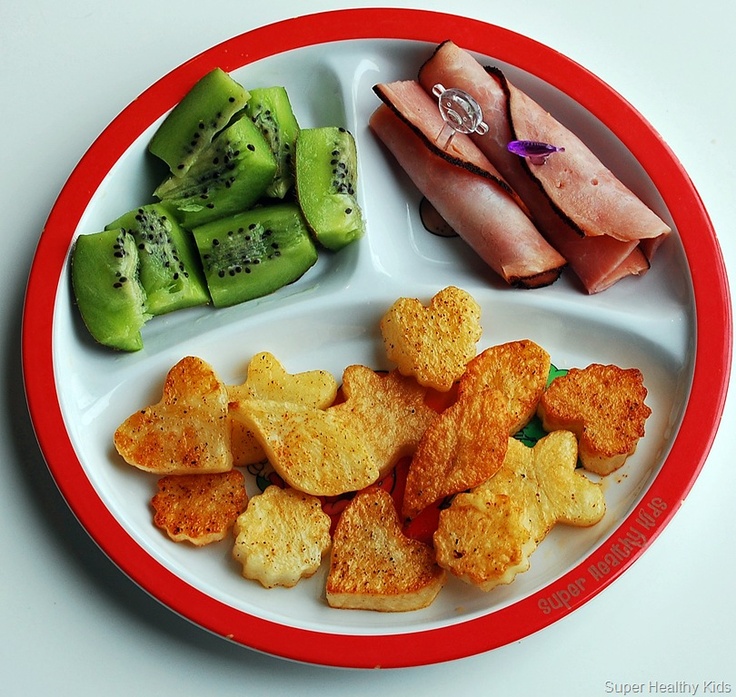
Benefits of Salmon for Baby
This is because it is packed with vitamins and minerals like vitamins D and B-12 and omega-3 fatty acids. In fact, salmon is one of the best sources of omega-3s! Combined, these nutrients help improve bone health, boost brain function, promote a healthy heart, and reduce ADHD symptoms in children.
How to Make Salmon Baby Food PureeMake sure to read the recipe card below for full ingredients and instructions!
- I used grilled salmon as that is what I had on hand, but any cooked salmon would work. Place 1/4 cup of cooked salmon along with 1 cup of cooked sweet potato or squash into a blender and puree for 1-2 minutes, adding 1/4 cup of liquids (water, fresh breast milk, or formula) until smooth.
- You can use any fruit or veggie your baby prefers in this recipe. Adding another veggie to the puree also helps the salmon blend into a nice, smooth puree.
Make sure to read the recipe card below for full ingredients and instructions!
- Flake some cooked salmon onto a baby-safe plate or their high chair tray, making sure to pick off any bones.
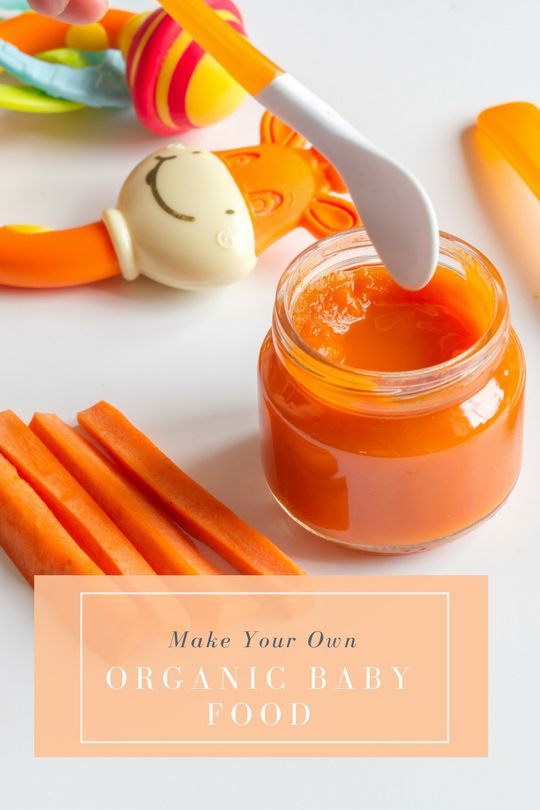 Let your baby eat them with their hand or with this baby-led weaning fork.
Let your baby eat them with their hand or with this baby-led weaning fork.
Yogurt
Plain, whole milk yogurt is a tasty first food for your baby and is great served by itself or mixed into other purees.
Benefits of Yogurt for Baby
Produced by the bacterial fermentation of cow’s milk, yogurt is full of beneficial probiotics that improve digestion and constipation that help keep our gut in good working order. Yogurt is also high in protein (especially Greek or skyr varieties) and calcium, helping our bones and teeth stay healthy and strong.
Whole milk yogurt is recommended over low fat because fat helps with brain development. Plus, fat and protein can help maintain fullness for longer. Yogurt has also been shown to help improve blood sugar control (the plain variety, not the sweetened, fruit, or vanilla flavored) and help reduce total cholesterol levels while increasing our “good” HDL cholesterol. It’s best to avoid any flavored yogurt at this age so your baby does not get too much sugar. You can also serve your baby plain goat’s milk as a nice alternative to cow’s milk yogurt. I recommend waiting to serve plant-based yogurts to your baby until 7 months, but keep in mind; they will not have the same nutrient profile as dairy yogurts.
You can also serve your baby plain goat’s milk as a nice alternative to cow’s milk yogurt. I recommend waiting to serve plant-based yogurts to your baby until 7 months, but keep in mind; they will not have the same nutrient profile as dairy yogurts.
How to Make Yogurt Baby Food Puree
Make sure to read the recipe card below for full ingredients and instructions!
- Place a small spoonful in a bowl and serve to your baby.
How to Serve Yogurt for Baby-Led Weaning
Make sure to read the recipe card below for full ingredients and instructions!
- Place a small spoonful of yogurt into a bowl, load up this self-feeding GOOtensil with a small amount of yogurt, and hand it to your baby.
NumNum Pre-Spoon GOOtensils
Our favorite spoon for baby! Designed to work great with both purees and soft solid foods, the spoon holds onto the food and makes it easier for baby to self-feed themselves.
View Product
Banana
Bananas and babies are pretty much synonymous.
Benefits of Banana for Baby
Bananas are sweet, mushy, and easy to digest, so they are ideal as first foods for babies. They are a good source of potassium and fiber, and here’s the best part: you don’t have to peel, chop, steam, or puree them. Just peel, pinch with your (clean) finger, and then serve! Spoons are totally optional. Older babies love to squish bananas on their own with a little pincer grasp. But beware of messy banana on bibs, faces, high chair trays, clothing, the floor, the dog, your hair. Oh, bananas! Many a happy baby has gobbled, gulped, and giggled his way through those first delicious bites of bananas! 🍌
How to Make Banana Baby Food Puree
Make sure to read the recipe card below for full ingredients and instructions!
- Take a ripe banana and peel.
- Place half of it on a cutting board, and mash with the back of a fork until it’s rich and creamy.
Make sure to read the recipe card below for full ingredients and instructions!
- Cut a banana in half, and then gently cut about 2 inches from the stem around the banana.
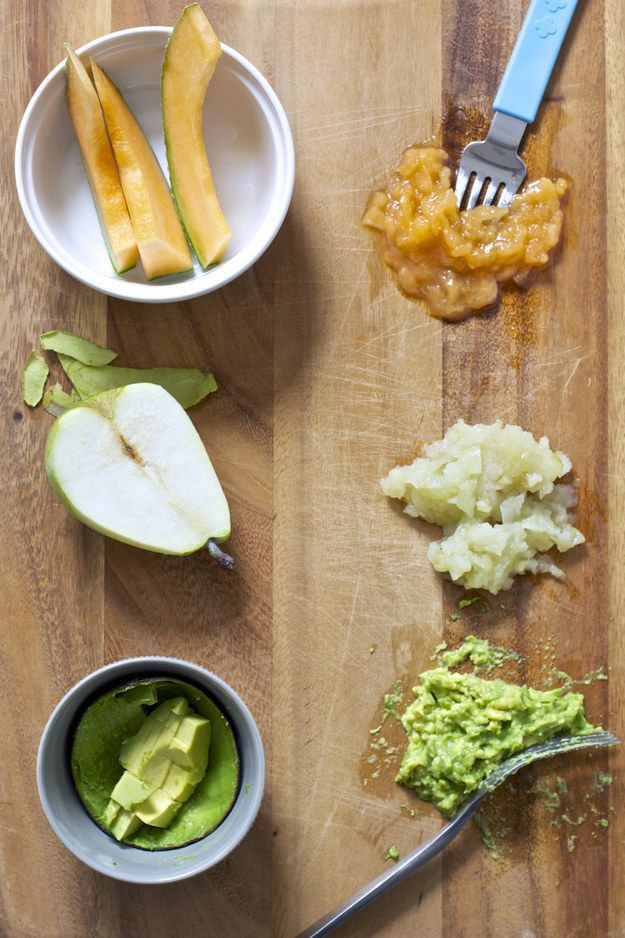
- Peel the top off, but leave the banana attached to give your baby a handle to hold onto.
- Hand your baby the stem part of the banana for them to hold onto while they eat it.
Looking for more banana recipes for your baby? I’ve got you covered: Banana Baby Food – 8 Ways (Puree & Baby-Led Weaning)
Squash
Squash comes in many delicious varieties and is one of the healthiest first food for babies.
Benefits of Squash for Baby
Delicata, Acorn, Hubbard, Kabocha, and Butternut are all part of the winter squash family and are all high in carotenoids, a special class of antioxidants that may help prevent cancer and inflammation. Winter squash may also help regulate blood sugar, reduce the risk of cardiovascular disease, and improve mood, thanks to its high content of mood-boosting Omega-3 fatty acids. Plus, winter squash has a robust, naturally sweet taste that babies will enjoy year-round.
How to Make Squash Baby Food Puree
Make sure to read the recipe card below for full ingredients and instructions!
- Place cubed squash (any variety) in a steamer basket and steam for 10-12 minutes or until tender when pricked with a fork.
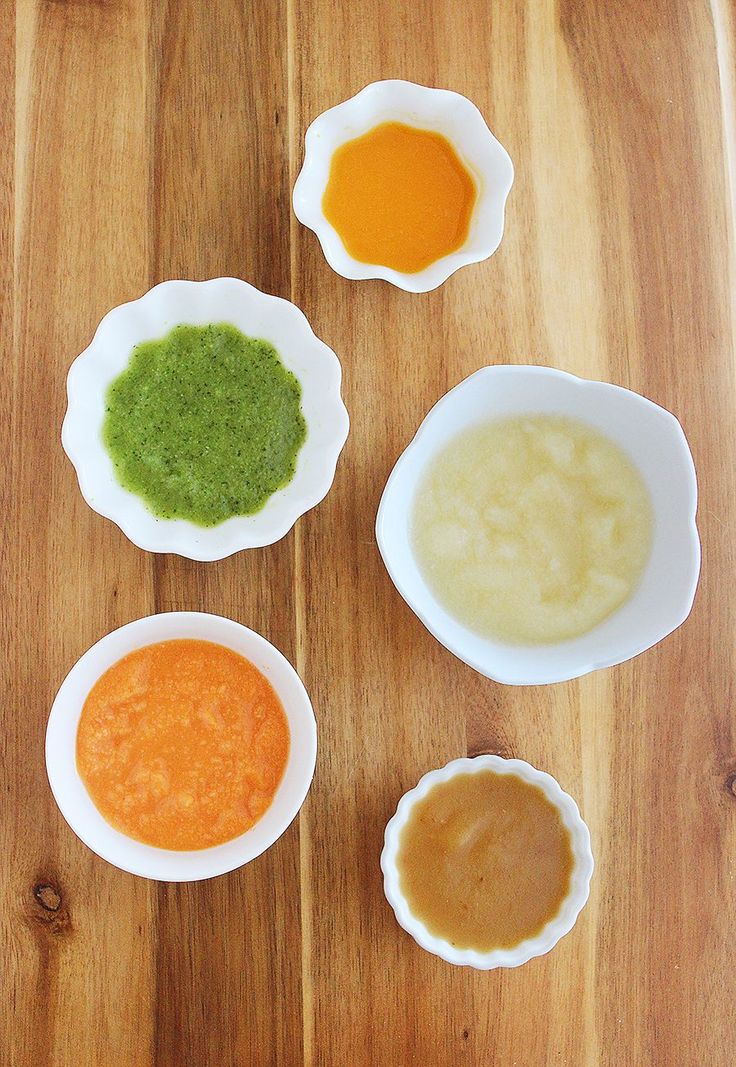
- Transfer to a blender and puree for 1-2 minutes on high, adding liquid (water, fresh breastmilk, or formula) in 1/4 cup increments until creamy. You can use frozen or precut squash to make your life a little easier.
How to Serve Squash for Baby-Led Weaning
Make sure to read the recipe card below for full ingredients and instructions!
- Cut long strips of squash and place them in a steamer basket over boiling water.
- Steam for 8-10 minutes until tender.
- Let them cool and serve. I love using this crinkle cutter to make veggies easier for my baby to grip.
Green Beans
In just one serving of green beans, your baby will be getting a nice big dose of essential nutrients.
Benefits of Green Beans for Baby
Nutrients found in green beans can help prevent various conditions, including asthma, ear infections, and even the common cold and flu! Although green beans have a rich, green color, they also provide your baby with carotenoids, normally found in vibrantly colored orange fruits and veggies. These carotenoids are potent health-supporting antioxidants that will help keep your baby free from illness!
These carotenoids are potent health-supporting antioxidants that will help keep your baby free from illness!
How to Make Green Beans Baby Food Puree
Make sure to read the recipe card below for full ingredients and instructions!
- Place two cups of green beans in a steamer basket over boiling water and steam for 8-10 minutes or until tender.
- Transfer the beans to a blender and puree for 1-2 minutes, adding 1/4 cup liquid (water, fresh breastmilk, or formula) if needed until smooth.
- Here are some more awesome green bean puree recipes: Green Bean + Basil Baby Food Puree, Green Bean + Coconut Oil Organic Baby Food Puree, and Green Beans + Parsley Baby Food Puree.
How to Serve Green Beans for Baby-Led Weaning
Make sure to read the recipe card below for full ingredients and instructions!
- Place a cup of green beans in a steamer basket and steam for 6-8 minutes or until tender when pricked with a fork.
- Let them cool.
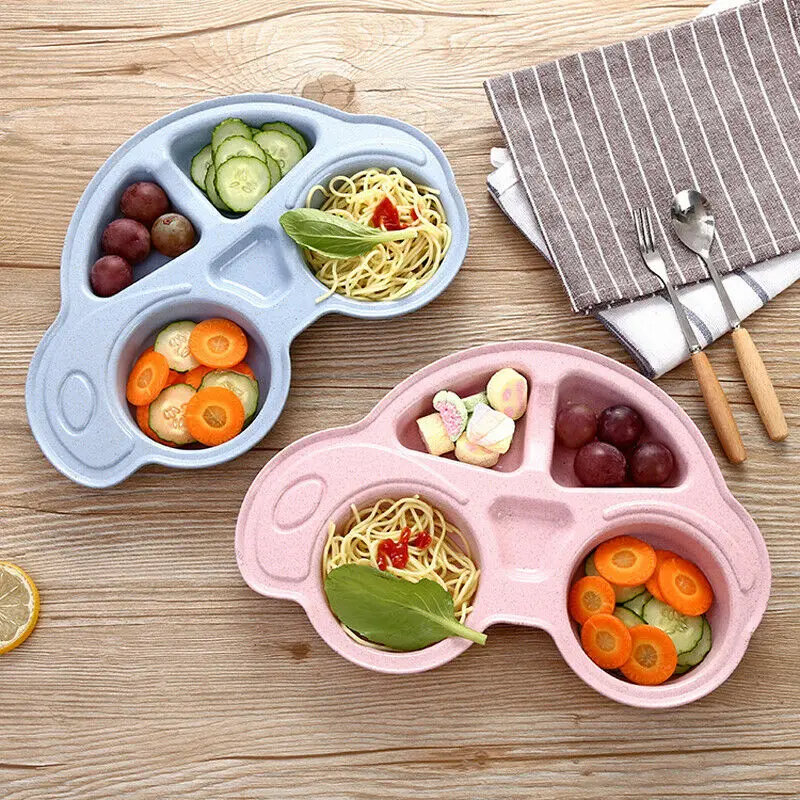
- If they are too long, cut them in half before serving to your baby.
- 1/4 avocado
- 1 large egg
- 1-2 medium sweet potatoes
- 1-3 apples, such as gala, fuji or honeycrisp
- 1-2 cups broccoli florets
- 1/4 cooked salmon
- 1-2 tbsp yogurt, plain whole fat or 2% fat
- 1/2 ripe banana
- 1-2 cups squash
- 1-2 cups green beans, trimmed
Avocado For Baby
For Puree: Simply peel and pit a quarter of a ripe avocado and place on a cutting board. Then with the back of a fork, mash the avocado until smooth.
 You can add in a teaspoon or two of formula or breast milk to make it super smooth and creamy.
You can add in a teaspoon or two of formula or breast milk to make it super smooth and creamy.For Baby-Led Weaning: Cut a slice of avocado off of the pit. Using a small knife, cut into the peel 1/3 of the way up the slice of avocado until you get to the flesh. Peel off 2/3 of the peel and hand baby the peel side of the avocado. This provides a nice handle for baby to hold while they eat the avocado.
Egg for Baby
For Puree: Using a hardboiled egg, peel away the shell and white part of the egg. Then place the cooked egg yolk on a cutting board or baby-safe plate. Using the back of a fork, mash the egg yolk until smooth, adding in a teaspoon or two of breast milk or formula if needed to make it creamy.
For Baby-Led Weaning: Peel a hardboiled egg and then cut into quarters the long way.
Sweet Potato for Baby
For Puree: Peel and chop 1-2 sweet potatoes.
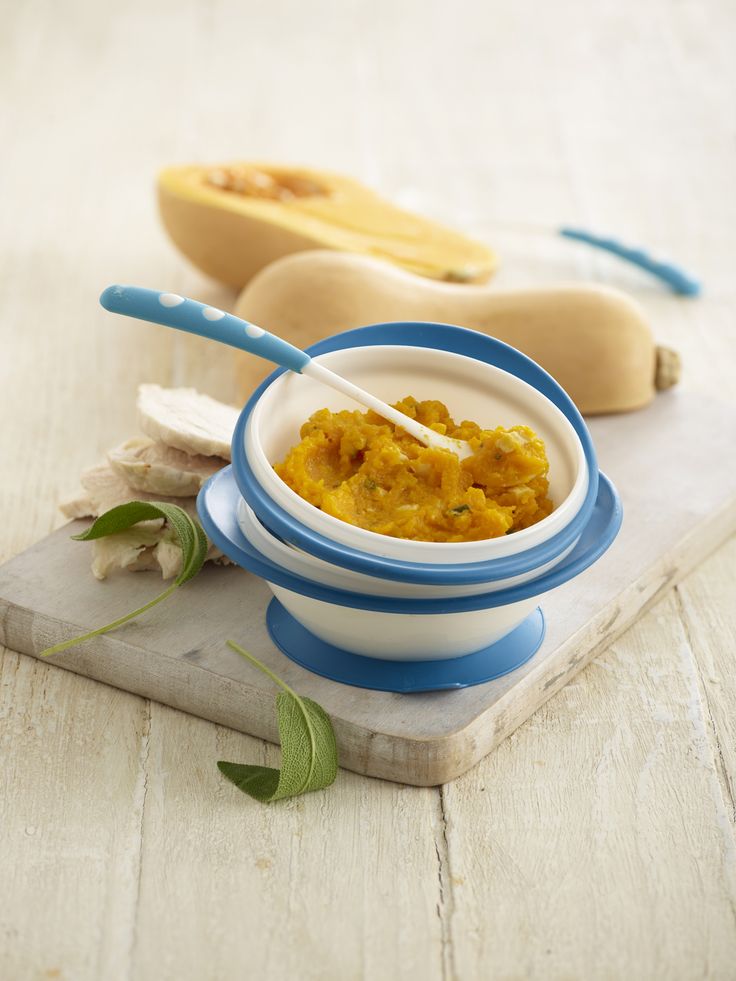 Place in a steamer basket over boiling water and steam for 10-12 minutes or until tender when pricked with a fork. Add cooked sweet potatoes to a food processor or blender, and puree for 1-2 minutes until completely smooth, adding in water in 1/4 cup increments if needed. I had to use 1 cup of water for the puree above.
Place in a steamer basket over boiling water and steam for 10-12 minutes or until tender when pricked with a fork. Add cooked sweet potatoes to a food processor or blender, and puree for 1-2 minutes until completely smooth, adding in water in 1/4 cup increments if needed. I had to use 1 cup of water for the puree above. For Baby-Led Weaning: Peel and slice the sweet potato into long strips that are half an inch thick. Place in a steamer basket and steam for 8-10 minutes or until just tender when pricked with a fork. You want them soft but not overcooked. Overcooked sweet potatoes tend to fall apart when baby fists them. Let cool and serve to baby. Will last 5 days in the fridge.
Apple for Baby
For Puree: Peel and chop 2-3 apples and place in a steamer basket over boiling water and cook for 8-10 minutes or until tender. Transfer the apples to a blender and puree for 1-2 minutes or until smooth, adding in liquid (water, breastmilk or formula) in 1/4 cup increments if needed.

For Baby-Led Weaning: Peel and slice an apple and place in a steamer basket over boiling water for 6-8 minutes or until just tender when pricked with a fork. You want it soft but not falling apart. Let cool and serve to baby. Optional – sprinkle a pinch of cinnamon on apple slices before serving. Steam apple slices will last in the fridge for 3 days, add a squeeze of lemon juice to help them from browning.
Broccoli for Baby
For Puree: Place 2 cups of broccoli florets in a steamer basket over boiling water and steam for 10-12 minutes until tender. Transfer to blender and puree for 1-2 minutes, adding in 1/4 cup of liquid (water, breastmilk or formula) until you have a smooth puree.
For Baby-Led Weaning: Place a cup of broccoli florets into a steamer over boiling water and steam for 8-10 minutes or until tender when pricked with a fork. Let cool and serve to baby in florets or chopped up into “pea” size pieces.
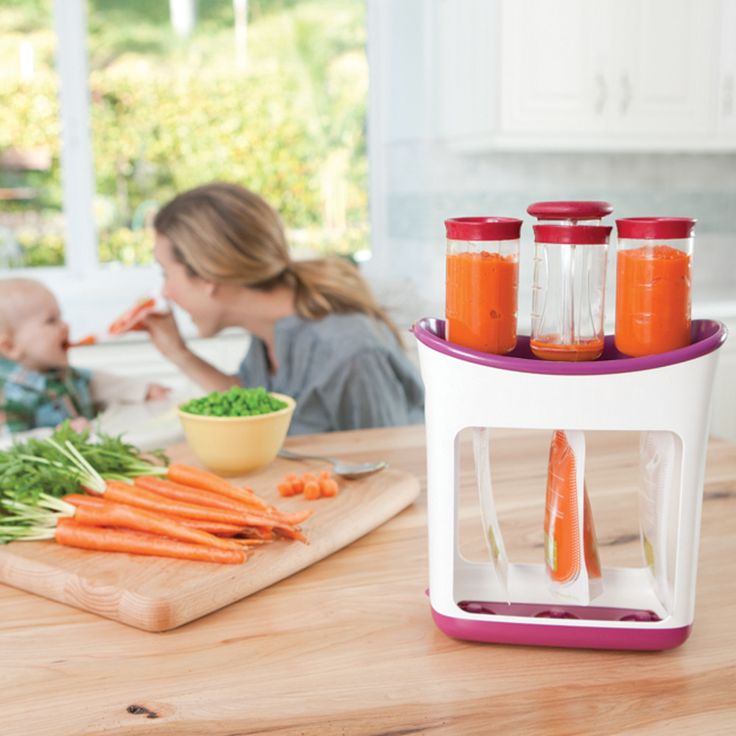
Salmon for Baby
For Puree: I used grilled salmon as that is what I had on hand, but any cooked salmon would work. Place 1/4 cup cooked salmon along with 1 cup cooked sweet potato or squash into a blender and puree for 1-2 minutes, adding in 1/4 cup of liquids (water, breast milk or formula) until smooth. You can really use any fruit or veggie your baby prefers in this recipe. Adding another veggie in the puree helps the salmon blend into a nice smooth puree.
For Baby-Led Weaning: Flake some cooked salmon onto a baby-safe plate or their high chair tray, making sure to pick off any bones. Let baby eat with their hand or with a baby fork.
Yogurt for Baby
For Puree: Place a small spoonful in a bowl and serve to baby.
For Baby-Led Weaning: Place a small spoonful of yogurt into a bowl and load up a self-feeding baby utensil with a small amount of yogurt and hand it over to baby.

Banana for Baby
For Puree: Place half of a ripe and peeled banana on a cutting board and mash with the back of a fork until smooth.
For Baby-Led Weaning: Cut a banana in half, and then gently cut about 2 inches from the stem around the banana. Peel the top off, but leave the banana attached, thus giving baby a handle to hold onto. Hand baby the stem part of the banana for them to hold onto while they eat the banana.
Squash for Baby
For Puree: Place cubed squash (any variety) in a steamer basket and steam for 10-12 minutes or until tender when pricked with a fork. Transfer to a blender and puree for 1-2 minutes on high, adding in liquid (water, breastmilk or formula) in 1/4 cup increments until smooth. You can use frozen or pre-cut squash to make your life a little easier.
For Baby-Led Weaning: Cut long strips of squash and place in a steamer basket over boiling water.
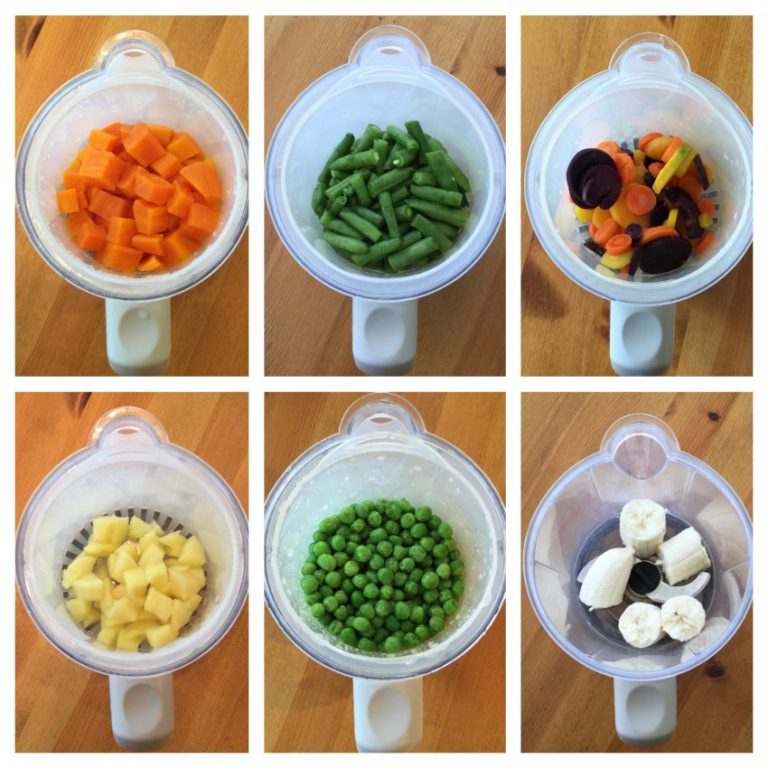 Steam for 8-10 minutes until tender. Let cool and serve.
Steam for 8-10 minutes until tender. Let cool and serve.
Green Beans for Baby
For Puree: Place two cups of green beans in a steamer basket over boiling water and steam for 8-10 minutes or until tender. Transfer the beans to a blender and puree for 1-2 minutes, adding in 1/4 cup liquid (water, breastmilk or formula) if needed until smooth.
For Baby-Led Weaning: Place a cup of green beans in a steamer basket and steam for 6-8 minutes or until tender when pricked with a fork. Let cool, cut in half if green beans are too long and serve to baby.
Age: 4+ months (stage one)
Storage: Purees can be stored in an air-tight container in the fridge for up to 4 days, and in the freezer for up to 3 months. Baby-led weaning foods can be stored in an air-tight container for up to 4 days.
Baby-led weaning foods can be stored in an air-tight container for up to 4 days.
Freezer Tray
Grabease Utensil
Bumkins Baby Bowl
Tripp Trapp High Chair
Did you make this recipe?
Tag @babyfoode on Instagram and hashtag it #babyfoode!
Pin Recipe Email a Friend
food rating in jars, for the first feeding, weight gain
When a baby appears in the family, parents have many new questions that they have not thought about before, and one of the most important is what to feed the child so that he grows up strong and healthy. But sometimes even the best baby food of a well-known brand causes rejection in the baby. In this review, we have collected the most proven baby food in jars and not only for the first feeding, focusing on the reviews of young mothers.
Content
- 1 Dairy mixtures
- 1.1 for newborns
- 1.1.1 Kabrita (Cabril) 1 based on goat milk for comfortable digestive
- 1.
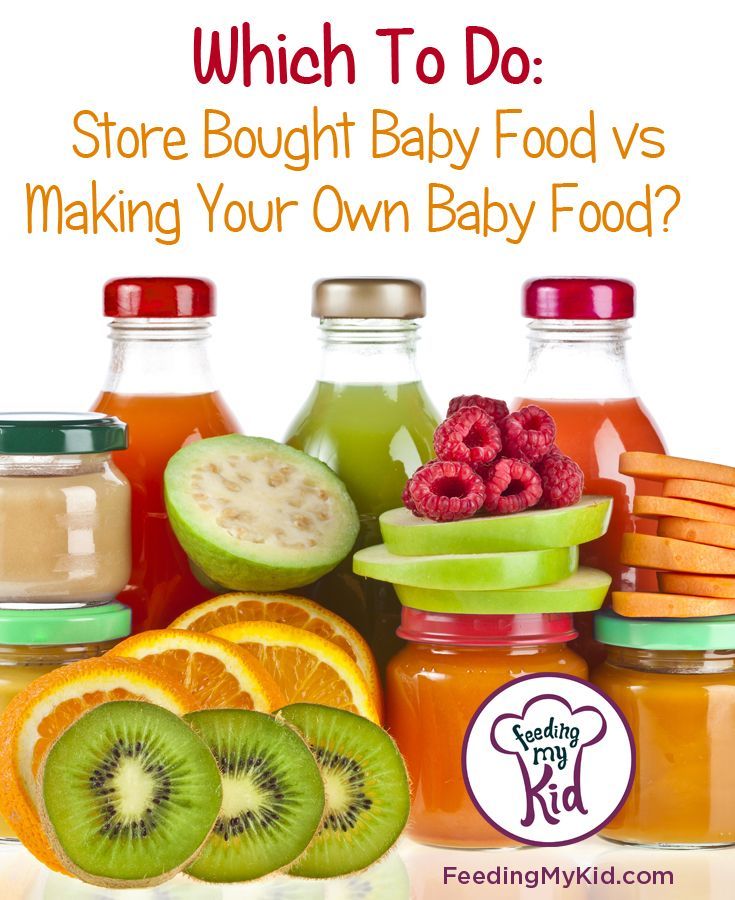 1.2 Nestgen (from birth) 700 g
1.2 Nestgen (from birth) 700 g - 1.1.3 BIBICOL Nanny 1 with prebiotics (from 0 to 6 months) 400 g
- 1.2 From 6 to 12 months
- 1.2.1 Similac (Abbott) Gold 2 (from 6 to 12 months) 800 g 1.2.2 Nestogen (Nestlé) 2 (from 6 months) 700 g
- 1.1 for newborns
- 1.3 From 1 year
- 1.3.1 Bibicol Nanny 3 (from 1 year) 800 g
- 1.3.2 Nutrilon (Nutricia) 3 Premium (from 12 months) 800 g
- 3.1 fleur alpine Silent oatmeal (from 5 months) 175 g
- 3.2 Bibikol Milk bibikash on goat milk (from 4 months) 200 g
- 9000 4.1 Milk AGUSHA UHUSHA ULTRAPASTISED (from 3 years old) 3.2%, 0.925 l
- 4.2 Milkshake FrutoNanny Raspberry (from 1 year old) 2.
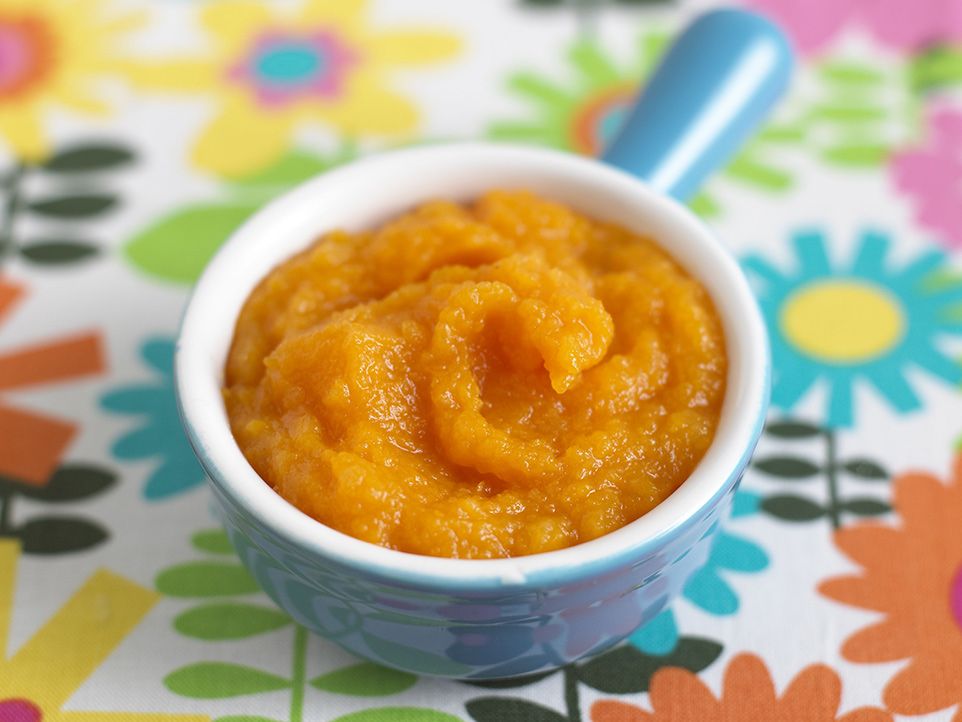 1%, 0.2 l
1%, 0.2 l
Dairy mixtures
The very first complementary foods are a milk mixture, so it will begin the differentials of it, 6 months, from 1 year old, as well as nutrition for weakened children, designed to gain weight.
For newborns
If for some reason the mother does not have milk, mixtures come to the rescue, which replace it. They are as close as possible in composition to women's milk, although, of course, nothing can be compared with breastfeeding. The ranking presents the 2 best mixtures: based on cow's and goat's milk.
Kabrita 1 based on goat's milk for comfortable digestion
Kabrita 1 formulas are designed for healthy babies from birth to 18+ months. Modern formulas and the benefits of goat's milk promote comfortable digestion for babies while maintaining protein integrity as tender goat's milk does not require additional modification for easier digestion.
Nestogen (Nestlé) 1 (from birth) 700 g
From 339 ₽
The budget formula based on cow's milk differs by its incomplete composition and concentration of useful substances in comparison with other manufacturers, but it is very well absorbed by the child's body. It does not cause colic, and the stool returns to normal with constant use.
BIBIKOL Nanny 1 with prebiotics (from 0 to 6 months) 400 g
From 1 049 ₽
A good infant formula that helps babies who are prone to allergies gain weight. It consists of various vegetable oils, maltodextrin, fish oil in microcapsules, which are not found in all mixtures for newborns. But not every store sells it.
6 to 12 months
2nd step milk formulas no longer have the soft texture of newborns. Bifidobacteria are included in their composition, the norm of vitamins and microelements is growing, as well as the nutritional value of drinking. Stage 2 blends are free of salt, sugar, GMOs, and artificial colors, but contain soy lecithin, starch, and coconut oil.
Similac (Abbott) Gold 2 (from 6 to 12 months) 800 g
From $6.99
This formula contains 2'-FL oligosaccharide, which is found in breast milk and helps develop the baby's immune system. According to parents, already 2 days after switching to Gold 2, stools return to normal in children, rashes (if any) stop. In general, a very good cow's milk blend with the addition of soy and soy lecithin.
Nestogen (Nestlé) 2 (from 6 months) 700 g
From 339 ₽
A good, hearty formula based on cow's milk, which is suitable for healthy babies, has the best quality-price ratio. Most children respond positively to it, with no manifestations of allergies or bloating. The clothespin spoon will not be lost: convenient.
From 1 year old
Almost every manufacturer of infant formula has formulations designed for babies over 1 year old. They are not so close in composition to breast milk, but become more like whole cow or goat milk.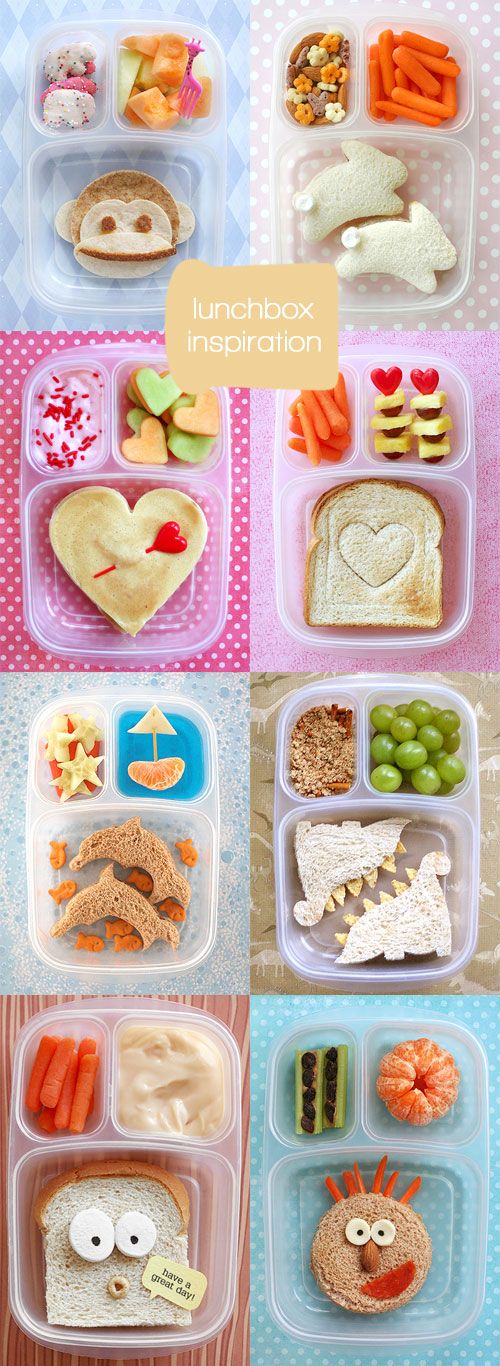 However, complementary foods are enriched with mineral and vitamin supplements and are more caloric than regular milk.
However, complementary foods are enriched with mineral and vitamin supplements and are more caloric than regular milk.
BIBIKOL Nanny 3 (from 1 year old) 800 g
From 2,090 ₽
An excellent mixture to saturate the child's body with the necessary substances and feed the child. If the baby is allergic to cow's milk, then Nanny will be the best, albeit expensive, substitute. Children are given it in the morning or in the evening, and the dry mixture can be stored for up to 3 years.
Nutrilon (Nutricia) 3 Premium (from 12 months) 800 g
From 655 ₽
I improve metabolic processes in the body of babies, helping to gain weight faster.
For weight gain
Babies born with poor vital signs need to eat better to catch up with their developmental peers. For infants with reduced body weight, leading manufacturers have created milk formulas enriched with protein supplements. It is also more high-calorie, but it is still well absorbed by babies.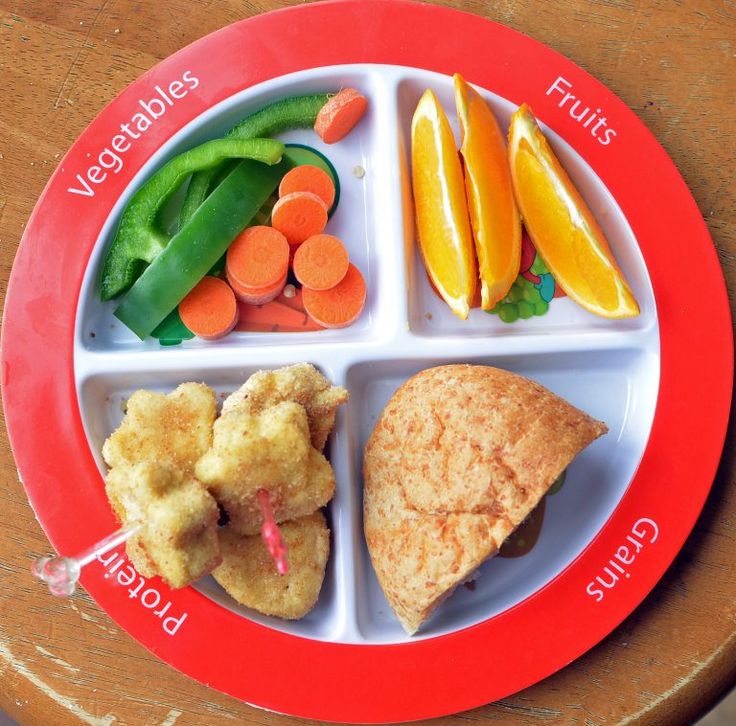
NAN (Nestlé) Pre (from birth) 400 g
From 700 ₽
High-calorie baby milk based on cow contains enzymes that help the weakened stomach break down nutrients. Moreover, there are a lot of them in the mixture. But the downside of high calorie content is increased gas formation.
Similac (Abbott) NeoSure (from birth) 370 g
From 700 ₽
A very rich formula of the zero stage of complementary foods meets the most stringent requirements for baby food. The ash in the mixture for weakened children absorbs excess gases, enzymes help break down nutrients, and prebiotics maintain normal flora in the gastrointestinal tract. But kids get constipation from it.
Puree
Baby puree fills the need for protein and helps to adapt to the adult diet. The first purees are always homogenized, without lumps. For older (from 1 year old) age, fruit or meat porridges may contain small lumpy fragments.
Turkey Fruit Nanny (from 6 months old) 80 g, 1 pc.
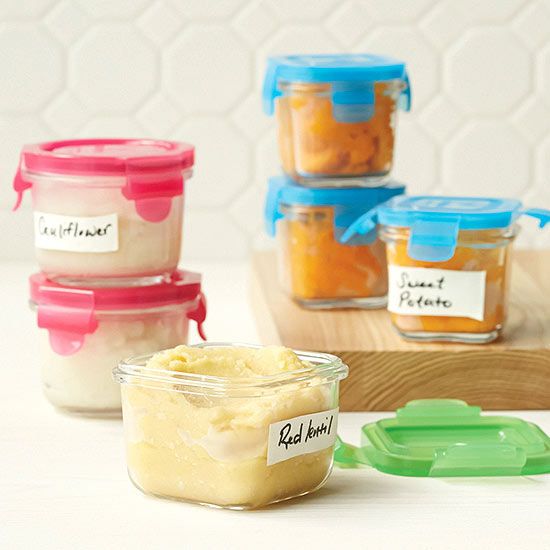
From 47 ₽
Simple in composition (turkey, rice, vegetable oil) puree is not liquid and smells good. It is claimed to be soy-free, but there are reports of soy allergies in connection with the start of complementary foods. Therefore, we can assume that the manufacturer is cunning.
Tema beef with rice (from 8 months) 100 g, 1 pc.
From 33 ₽
Meat puree with rice and sunflower oil is packed in a can. To open it, pull the ring. But few of the babies at 6 months will master all 100 g of porridge in 1 sitting, and there is nothing to close the jar. These are all cons.
Porridges
When the baby grows up, milk formula alone is not enough. His digestive system is already ready to receive coarser food, so they begin to introduce cereals. So the child is taught to chew and accustomed to eating at a common table.
Fleur Alpine dairy-free oatmeal (from 5 months) 175 g
From 159 ₽
This one-component porridge enriched with vitamin B1, made from oatmeal, is recommended for children from 5 months.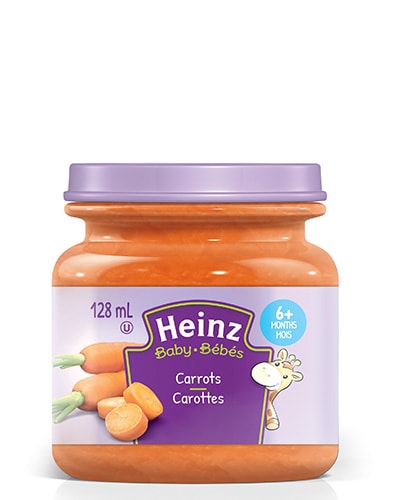 It is satisfying (428 kcal / 100 g of flakes) and quickly saturates the child. But because of the simple composition, it seems completely tasteless.
It is satisfying (428 kcal / 100 g of flakes) and quickly saturates the child. But because of the simple composition, it seems completely tasteless.
BIBIKOL milk BIBIKASHA buckwheat with goat milk (from 4 months) 200 g
From 307 ₽
Rich in composition porridge made from buckwheat flour with goat milk after cooking does not smell like goat, but dissolves without lumps. Vitamin-mineral complex and prebiotics help the body to better absorb it. But not every parent can afford to buy such expensive complementary foods.
Dairy products
Milk is useful because it contains calcium, which strengthens children's bones. But getting a child to drink at least a glass of milk is not so easy. Parents come to the aid of dairy products, which children drink much more readily than regular milk.
UHT Agusha milk (from 3 years old) 3.2%, 0.925 l
From 80 ₽
Long-term pasteurized cow's milk in a Tetra-Pak package can be stored without a refrigerator, and nothing will happen to it. But only until the opening, and then - in the cold. Agushi's designers made sure to keep the baby busy while mom is cooking.
But only until the opening, and then - in the cold. Agushi's designers made sure to keep the baby busy while mom is cooking.
Milkshake FrutoNyanya Raspberry (from 1 year old) 2.1%, 0.2 l
From 27 ₽
Sweet cocktail with a volume of 200 ml is recommended for children over 1 year old in the amount of 50-70 g at a time. After opening, be sure to store it in the refrigerator for no longer than 1 day. Because of the flavor, you need to monitor the reaction of the child: if there are any allergies.
The best manufacturers
The Russian market offers a wide range of baby food, both domestic and imported. Some manufacturers concentrate on the release of a limited line (for example, powdered milk formulas), while the other tries to expand the offer as much as possible. Be that as it may, the most important selection criteria are safety and benefits for the child's body.
Nestogen (Nestlé)
A world leader in the food market, Nestogen produces infant formulas enriched with prebiotics, lactobacilli.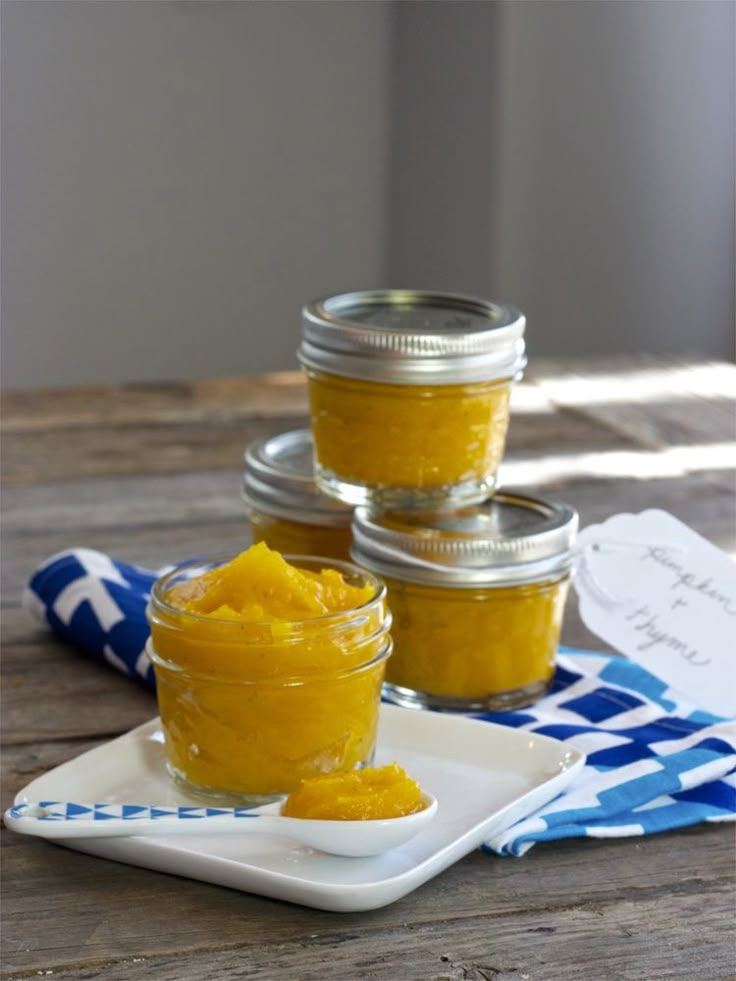 The composition of the product is well balanced for maximum absorption by the child's body. Ingredients include demineralized, skimmed milk, vegetable oils (excluding palm), maltodextrin. However, formula is not suitable for children with lactose allergy.
The composition of the product is well balanced for maximum absorption by the child's body. Ingredients include demineralized, skimmed milk, vegetable oils (excluding palm), maltodextrin. However, formula is not suitable for children with lactose allergy.
BIBIKOL
The company offers a wide range of products for children from birth, as well as pregnant women who are intolerant to cow's milk. Her cereals and milk formulas are based on goat's milk, and the combination of flavors of mashed goat's curd is sometimes confusing (tomato and sweet pepper from 9 months or banana, pineapple, muesli and yogurt from 6 months). Nutrition for growing gourmets requires prior consultation with specialists.
Similac
Similac baby food is sold in the middle price segment. Products do not contain GMOs, contribute to the normal functioning of the gastrointestinal tract, compaction of the child's bone tissue. The quality of the mixtures is not inferior to premium brands, and the assortment also includes formulations for babies with sensitive digestion.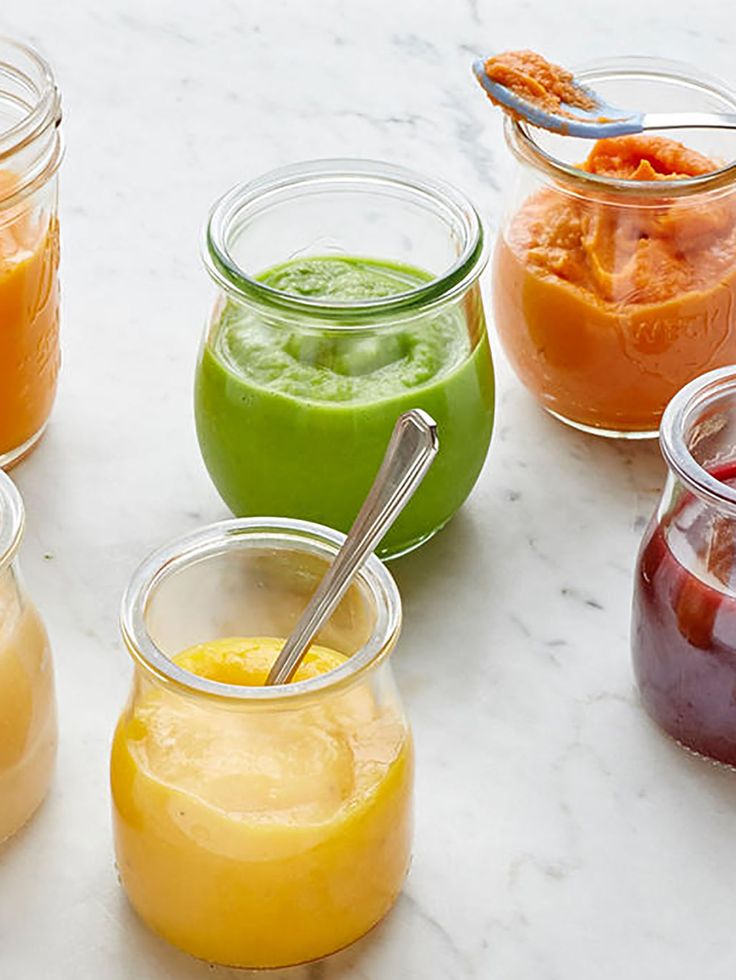
Nutrilon (Nutricia)
A Dutch company with 120 years of experience producing complementary foods for babies from birth to 3 years of age. Nutrilon is designed for debilitated, including premature, babies who need to gain weight. For a gentle gastrointestinal tract, mixtures are made exclusively from hypoallergenic products, with the inclusion of prebiotics. Sugar and starch additives are excluded. Prices are quite affordable.
FrutoNyanya
Domestic company offering the widest range of baby food, from fruit and meat purees in jars to juices and drinking water for older babies. FrutoNyanya is the best quality baby food on Russian shelves, and the prices are very affordable.
Tyoma
A subsidiary of the Unimilk concern produces vegetable and fruit juices, meat purees or mixed juices (for example, beef with zucchini). But its dairy products with and without probiotics are in the greatest demand: sterilized milk, biocurd, biolact. Hypoallergenic food at an affordable price has one drawback: the variety of tastes is not so great, otherwise there are only pluses.
Hypoallergenic food at an affordable price has one drawback: the variety of tastes is not so great, otherwise there are only pluses.
In conclusion, it is worth remembering that combining artificial foods with breastfeeding causes colic in babies, as their ventricles are still learning to digest different types of food. Introduce complementary foods gradually so that the child's body has time to get used to the new food.
Subscribe to our channel in Yandex.Zen so as not to miss anything!
Friends will also be interested in this
Loading ...
ranking of the top 10 Russian and foreign brands with reviews according to KP
Products for children are always under special quality control. Including food. After all, food for a baby is not only a way to satisfy hunger, but also acquaintance with different tastes and a guarantee of healthy development (1). Today there are many different brands. Among them, we selected the best manufacturers of baby food, based on the reviews of parents and expert opinions.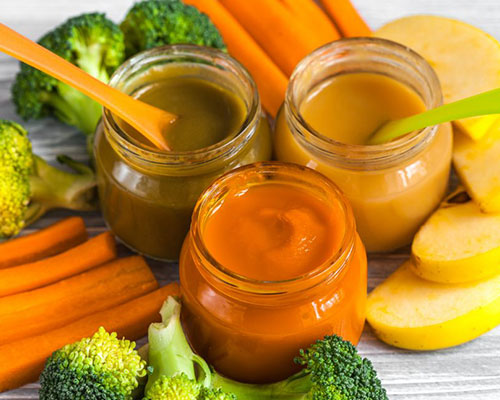
Rating of the top 5 Russian baby food manufacturers according to KP
There are many popular brands among Russian baby food manufacturers. Basically, various purees, juices, cereals and dairy products are presented on the market. There are also formulas for babies, but in smaller quantities. The popularity of food is due to high quality and rather low (in comparison with foreign analogues) price.
1. "Agusha"
"Agusha". Photo: yandex.market.ruAgusha is one of the most popular manufacturers of baby food in Russia. The trademark appeared in 1992 and has a wide range of products for children of all ages. Newborns are offered powdered milk formulas, babies from 4 months - a variety of purees, sour-milk products, water, older children - ready-made cereals (both dairy and non-dairy), juices, fruit drinks, compotes and fruit bars for a snack.
Thanks to the availability and variety of products, the manufacturer is confidently holding onto the Russian market. The safety and quality of Agushi is also confirmed by some neutral studies. For example, fruit cottage cheese, as well as kefir from this brand, received the highest rating from Roskachestvo (2, 3).
The safety and quality of Agushi is also confirmed by some neutral studies. For example, fruit cottage cheese, as well as kefir from this brand, received the highest rating from Roskachestvo (2, 3).
There are mixtures in the product line; a wide range of.
High price for some items.
2. "FrutoNyanya"
"FrutoNyanya". Photo: yandex.market.ruFrutoNyanya baby food brand products are distinguished by a wide range and wide distribution in stores. Among the products of the brand you can find: a variety of cereals (with additives in the form, for example, pieces of fruit or without them), vegetable, fruit and meat purees, water, dairy products, juices, fruit drinks and nectars, snacks. For children prone to acute reactions to certain products, a special line of hypoallergenic food is offered.
Some of the brand's products have received high ratings from Roskachestvo, for example, biocurd, buckwheat porridge (4, 5).
Nutrition from this brand is designed for both the first complementary foods and for babies after a year. The composition contains salt and sugar, which are not recommended for children under one year old.
The composition contains salt and sugar, which are not recommended for children under one year old.
Main characteristics
| Producer | Progress |
| Assortment | purees, drinks, soups, snacks, cereals, snacks, water |
| Recommended age | from 0 months |
| Founded | 2000 |
Pros and cons
There are hypoallergenic products.May contain allergenic ingredients (eg sugar).
3. "Grandmother's Lukoshko"
"Grandmother's Lukoshko". Photo: yandex.market.ruThe manufacturer has been present on the Russian market since 1999. The main product is a variety of purees, which are available in glass jars and soft packs. For example, apple puree from this brand received the highest rating from Roskachestvo in all analysis criteria and was awarded the Quality Mark (6).
For older children, prepared meals, meatballs, healthy snacks such as fruit lozenges and biscuits are available. Also, "Babushkino Lukoshko" produces children's herbal teas. Salt in some products is not always welcomed by parents.
Also, "Babushkino Lukoshko" produces children's herbal teas. Salt in some products is not always welcomed by parents.
Main characteristics
| manufacturer | “SIVMA” |
| Assortment | puree, ready dinner, drinks, fruit pastures |
| from 4 months | |
| Founded | 1999 |
Pros and cons
Relatively low price in the segment; varied products.
There may be undesirable auxiliary components in the formulation (eg salt).
4. "Subject"
"Subject". Photo: yandex.market.ru "Theme" offers products for children from 4 months to 3 years. The assortment includes a variety of meat, fish and vegetable purees, dairy products, ready meals and juices. But fruit purees are not presented. Packaging 一 is one of the distinguishing features of the brand. Thanks to special tin cans, the products are reliably protected from sunlight, which prolongs the shelf life.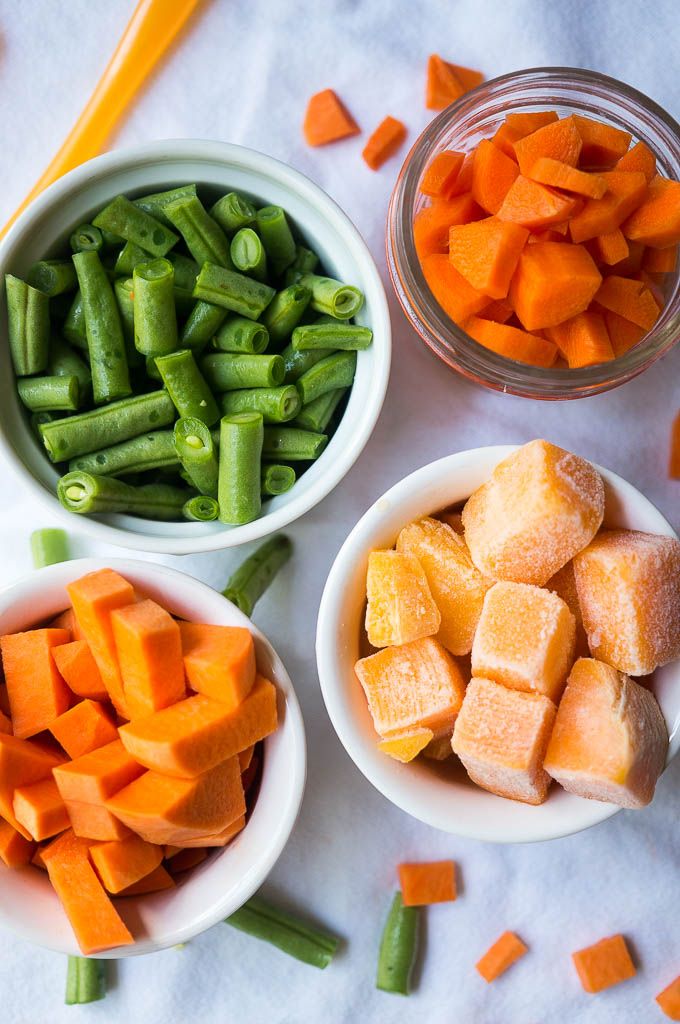 Also, many products of the brand are available in non-spill packages, so it is convenient to take them with you on the road. According to the results of the research, cottage cheese and juice "Theme" received the highest rating from Roskachestvo (7, 8).
Also, many products of the brand are available in non-spill packages, so it is convenient to take them with you on the road. According to the results of the research, cottage cheese and juice "Theme" received the highest rating from Roskachestvo (7, 8).
5. Diaper
Diaper. Photo: market.yandex.ruAll ingredients for production are supplied from our own farm. The manufacturer claims that thanks to this, it is possible to set fairly low prices for products.
The potential buyer is offered fruit and vegetable purees (some with cottage cheese), soups, various juices and fruit drinks, as well as water. Some of the products are hypoallergenic. The composition does not contain unnecessary components: salt, sugar and preservatives. Meat and fish products are not represented in the product line.
Main characteristics
| Manufacturer | “Gardens Podonia” |
| Assortment | puree, drinks, cream, porridge | with 4 months with 4 months with 4 months with 4 months | 2005 |
Pros and cons
Low price in the segment; simple and clear structure.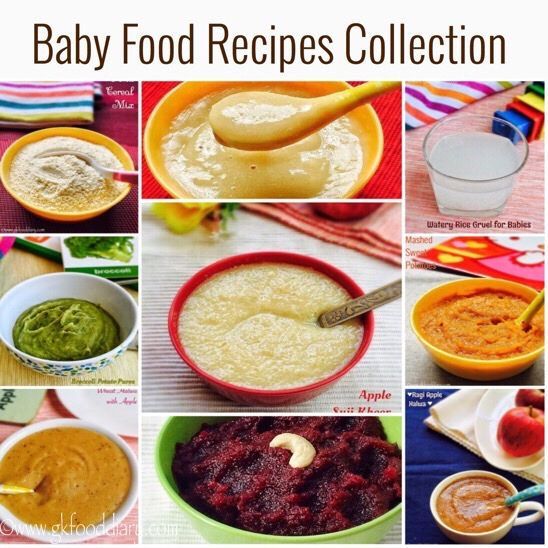
Lack of meat and fish products in the assortment.
Rating of the top 5 foreign manufacturers of baby food according to KP
There are many foreign companies that produce baby food on the Russian market. A century of history, many years of experience and a good reputation helps to supply the market with quality products, which are preferred by many parents.
1. Gerber
Gerber. Photo: yandex.market.ruThe assortment of the American manufacturer includes products for children from 4 months. In supermarkets and online sites, you can find vegetable and fruit purees, cereals, healthy snacks, juices, and desserts (cottage cheese treats, smoothies, and others). Hypoallergenic food is also provided. For example, dairy-free buckwheat porridge of this brand is highly appreciated by Roskachestvo experts, who noted the safe composition of the product without dangerous and harmful substances, including no added sugars (
Pros and cons
Hypoallergenic products; natural composition; high quality.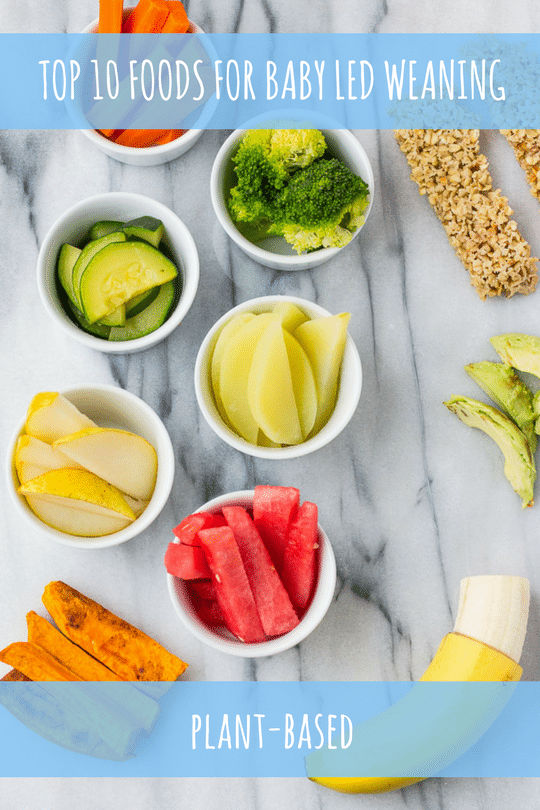
High price in the baby food segment.
2. HiPP
HiPP. Photo: yandex.market.ruGerman manufacturer's products are suitable for children from birth. Infants are offered hypoallergenic powdered milk formulas enriched with vitamins. For feeding - various purees, cream soups, cereals, and as a snack for older children - snacks and dairy desserts.
Meals are made exclusively from natural ingredients, without added sugar. The high price, according to the manufacturer, is due to the use of special technologies and high-quality products.
Main characteristics
| manufacturer | HIPP |
| Assortment | puree, cereals, drinks, snacks, dry dairy mixtures | Recommended age 907 |
| Country of origin | Germany |
| Year founded | 1957 |
Pros and cons
Natural composition; There are baby formulas in the assortment.
High price of products.
3. Fleur Alpine
Fleur Alpine. Photo: yandex.market.ruNatural baby food of premium quality. The range includes purees, cereals, cookies and juices - both regular and for children prone to allergies or intolerant to gluten. In addition to the usual products, the manufacturer offers olive oil (from 6 months) and sauces (from 3 years).
From time to time, the products of this brand come under the attention of experts from Roskachestvo and Roskontrol. For example, Three cereals porridge showed excellent results: a good composition with dietary fiber and no foreign impurities, the appropriate taste, color and smell (10), and buckwheat porridge meets the advanced standards of Roskachestvo, except for the increased protein content (11).
Not all products on the official website can be purchased in a regular store. However, they can be purchased on marketplaces.
High price; Not all brand products are easy to find on offline sites.
4. Semper
Semper. Photo: yandex.market.ruThe Swedish company offers a wide range of products for children of all ages. Dry milk formulas are suitable for newborns, and there are even specialized ones that are best used for constipation. Some of them are designed for babies older than six months. For crumbs older than 4 months, the manufacturer offers a variety of vegetable, meat, fish and fruit purees, cereals, juices and children's tea with vitamins. In addition to the usual products for children, there are wellings — oatmeal and multi-cereal porridges with natural additives, cookies, and meatballs.
Roskachestvo examined this brand's applesauce and, apart from its high carbohydrate content (higher than indicated on the package), found no drawbacks (12). In addition, some purees contain starch.
Main characteristics
| manufacturer | Hero Group |
| Assortment | Dairy mixtures, puree, porridge, drinks, cookies |
Recommended age 908 908 9 months 9 months 9 months C 9. 0311 0311 | |
| Country of origin | Sweden |
| Founded | 1963 |
Pros and cons
There are mixtures in the product line interesting combinations of flavors.
High price in the segment; the presence of starch in the puree; the product according to BJU may differ from that stated on the package.
5. Heinz
Heinz. Photo: yandex.market.ru American food company offers a wide range of products at affordable prices. There are fruit, vegetable and meat purees, cereals (dairy and non-dairy), soups and drinks. As a healthy snack for babies from 5 months, special cookies are suitable, and fruit and cream puddings will be a great dessert for older children. You can also find a special vermicelli that will suit crumbs from 6 months. The manufacturer's porridges received the highest rating from Roskachestvo (13). However, some products contain sugar and starch, which many parents of babies do not approve of.
Some products contain sugar and starch.
How to choose the right baby food
A child's menu may differ from another baby's diet, not only due to age, but also due to health conditions (for example, a tendency to constipation or a dairy allergy) and personal preferences. However, the first thing to consider is age. It’s also important to keep in mind that your baby’s diet should be free of added salt and sugar (14). Certain positions deserve some explanation.
Milk formulas
Designed for feeding babies. In fact, they are designed to become an alternative to mother's milk. For the full development of the crumbs, it is necessary that vitamins and trace elements are present in the composition.
Canned puree
Introduced from 4 months. There are fruit, vegetable, meat and fish options. Combinations are also possible. For the first feeding, it is recommended to choose one-component purees from vegetables or fruits.
Porridges
Porridges, as well as mashed potatoes, are recommended to be offered to a baby from 4 months. Thanks to the special processing of cereals, baby porridge is easily boiled, which significantly saves cooking time.
Thanks to the special processing of cereals, baby porridge is easily boiled, which significantly saves cooking time.
Nectars, juices
You can give your baby juice or nectar from the age of 4 months. As long as it doesn't contain sugar. If available, it is better to wait at least up to 1 year.
Reviews of doctors about manufacturers of baby food
一 Baby food is becoming an object of special attention on the part of the state and parents, 一 says pediatrician Ekaterina Mikhaltsova . - The main advantages of industrial products and dishes are ease of use, balanced composition and minimal cooking time. However, you must strictly follow the age recommendations and cooking rules indicated on the labels.
- Dairy products and baby food in particular are complex production products where quality control is essential at all stages. Therefore, it is better to trust large manufacturers, - explains sanitary doctor Nikolai Dubinin . - It is important to pay attention to the composition and, before offering the child, taste the food yourself. In general, doctors agree that commercially produced baby food is no worse than home-cooked. And some are even better, due to supplements in the form of vitamins and trace elements.
- It is important to pay attention to the composition and, before offering the child, taste the food yourself. In general, doctors agree that commercially produced baby food is no worse than home-cooked. And some are even better, due to supplements in the form of vitamins and trace elements.
Popular questions and answers
We answer the most common questions about baby food together with pediatrician Ekaterina Mikhaltsova and sanitary doctor, epidemiologist Nikolai Dubinin.
How to choose food for the first feeding?
Pediatricians recommend starting the first complementary foods with vegetable puree. Fruits contain a large amount of fructose, which can irritate the lining of the stomach and other organs of the gastrointestinal tract. Of course, the parent himself can boil and grind vegetables to a puree-like consistency, but it is easier to purchase products in the store, since baby food is made in compliance with special technologies, taking into account all the rules and regulations.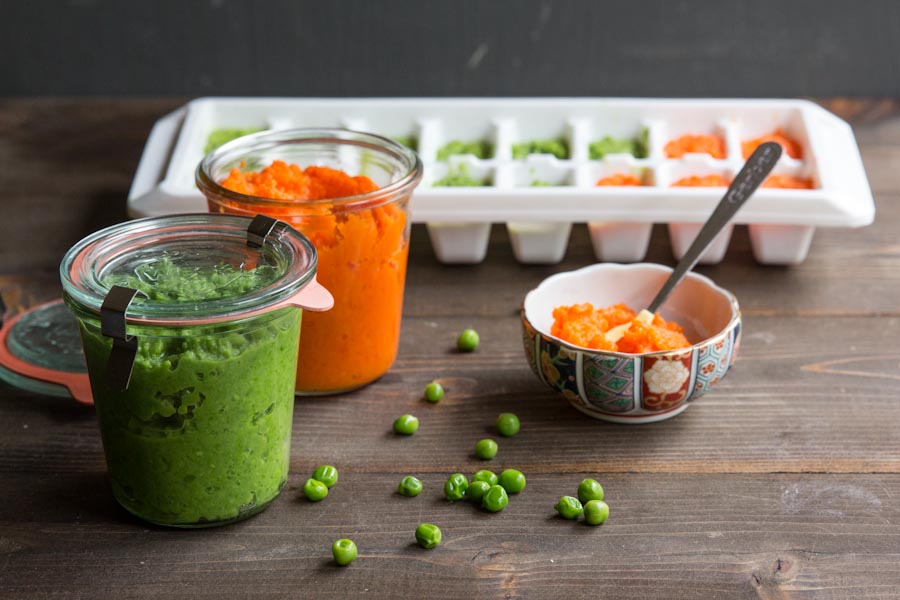
Another question is how to choose a brand among such a variety of baby foods. The best solution is to stick with a well-known brand. Large companies care about their reputation, and therefore strictly follow all established quality standards and do not violate production technology.
The next step is to study the information on the label, make sure the quality, evaluate the following indicators:
• Natural composition. Preservatives, salt, sugar and other ingredients must not be present in the composition (at least in products for children under 1 year old).
• Consistency (grinding quality). A good puree should be smooth and without lumps.
• Multi or single ingredient . The first puree should contain only one ingredient. The child should get used to a certain vegetable, after which it will be possible to introduce others, adding each one in turn, so that the baby gets used to everything individually.
• Hypoallergenic product. Formula must not contain ingredients that can cause an allergic reaction.
• Package intact . It is important to inspect the container in detail for dents, scratches or cracks (chips). Tightness must be observed. Don't forget to check the production date.
• Child age appropriate . The age for which this or that product is designed is usually indicated on the packaging in compliance with the recommendations of pediatricians.
When all these factors are taken into account, it can be said that the product is really suitable for the child and will not cause side effects (15).
Which of the Russian manufacturers should I pay attention to?
Baby food brand Agusha has been producing products for over 30 years. The assortment has everything you need for a complete diet for kids: dairy products, cereals, fruit, vegetable and meat purees, juices and compotes. The company produces safe, hypoallergenic, complete nutrition for children of all ages. High-quality substitutes for breast milk and subsequent complementary foods are also produced. It is also recommended to pay attention to the manufacturers "FrutoNyanya" and "Theme".
High-quality substitutes for breast milk and subsequent complementary foods are also produced. It is also recommended to pay attention to the manufacturers "FrutoNyanya" and "Theme".
What composition should healthy baby food contain?
When choosing puree in jars, pay attention to the composition. The ingredients should be natural, a good option (especially for younger kids) if the puree is a one-component puree - a fruit or vegetable plus water. Please note that the product does not contain salt, flour, starch, dyes and preservatives, and is not too diluted with water. The vegetable itself may contain starch, but its additional additives are very undesirable.
Sources
- Once again about baby food. Ladodo K. S. 2003.
- Roskachestvo rating. Children's cottage cheese "Agusha". URL: https://rskrf.ru/goods/tvorog-detskiy-fruktovyy-agusha-multifruktovyy-s-massovoy-doley-zhira-3-9/
- Roskachestvo rating. Children's kefir "Agusha".
 URL: https://rskrf.ru/goods/kefir-agusha-s-massovoy-doley-zhira-3-2-dlya-pitaniya-detey-starshe-8-mesyatsev/
URL: https://rskrf.ru/goods/kefir-agusha-s-massovoy-doley-zhira-3-2-dlya-pitaniya-detey-starshe-8-mesyatsev/ - Roskachestvo rating. Biocurd "FrutoNyanya". URL: https://rskrf.ru/goods/biotvorog-frutonyanya-yabloko-obogashchennyy-vitaminom-d3-s-massovoy-doley-zhira-4-2-dlya-pitaniya-d/
- Roskachestvo rating. Buckwheat porridge "FrutoNyanya". URL: https://rskrf.ru/goods/frutonyanya-pervyy-vybor-grechnevaya-kasha/
- Roskachestvo rating. Apple puree "Babushkino Lukoshko" URL: https://rskrf.ru/goods/pyure-fruktovoe-gomogenizirovannoe-sterilizovannoe-dlya-pitaniya-detey-rannego-vozrasta-s-4-mesyatse/
- Roskachestvo rating. Biocurd "Theme". URL: https://rskrf.ru/goods/biotvorog-tyema-obogashchennyy-bifidobakteriyami-s-grushey-dlya-detskogo-pitaniya-massovaya-dolya-zh/
- Roskachestvo rating. Apple juice "Theme". URL: https://rskrf.ru/goods/sok-yablochnyy-vostanovlennyy-osvetlennyy-dlya-detskogo-pitaniya/
- Roskachestvo rating. Buckwheat porridge Gerber.





